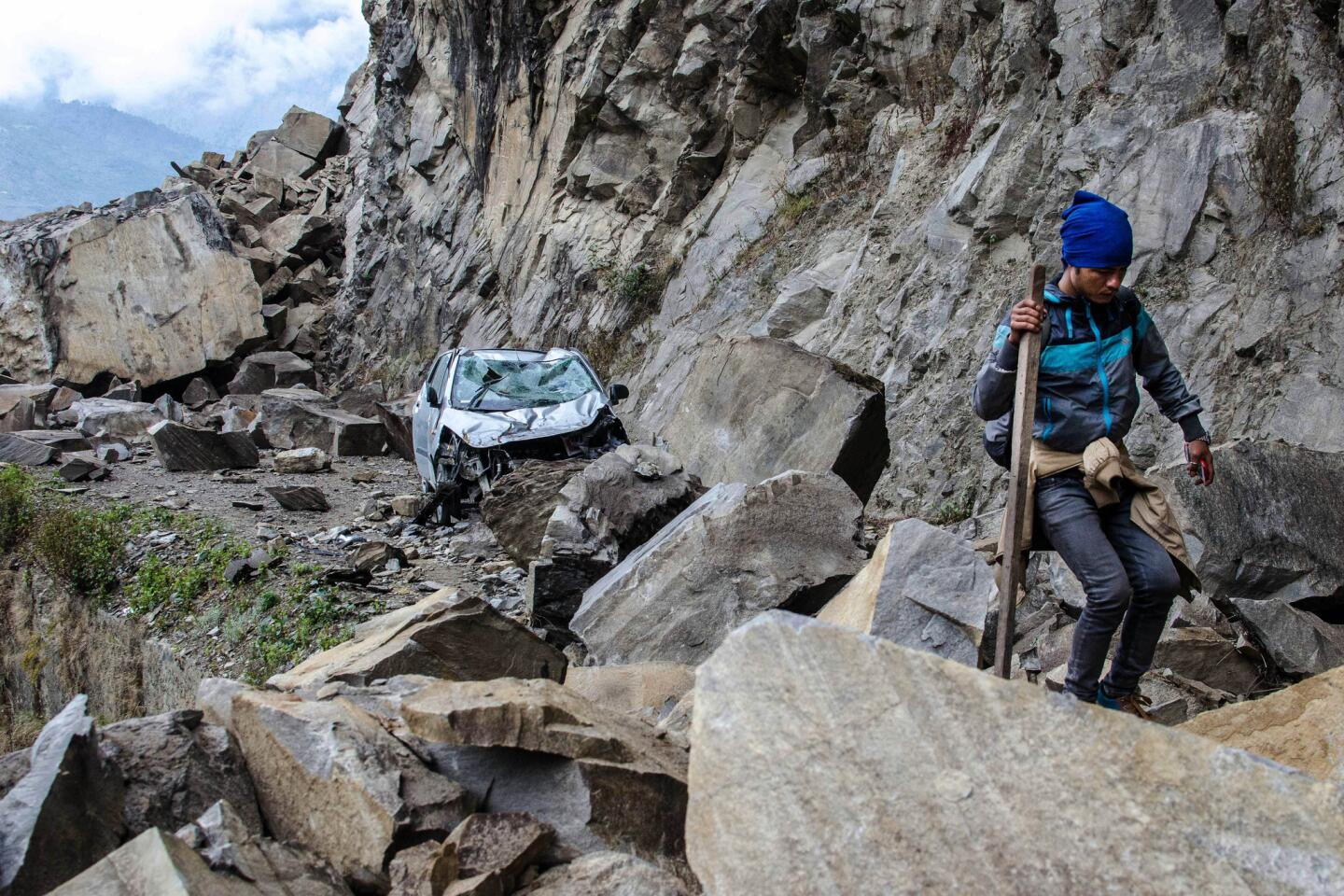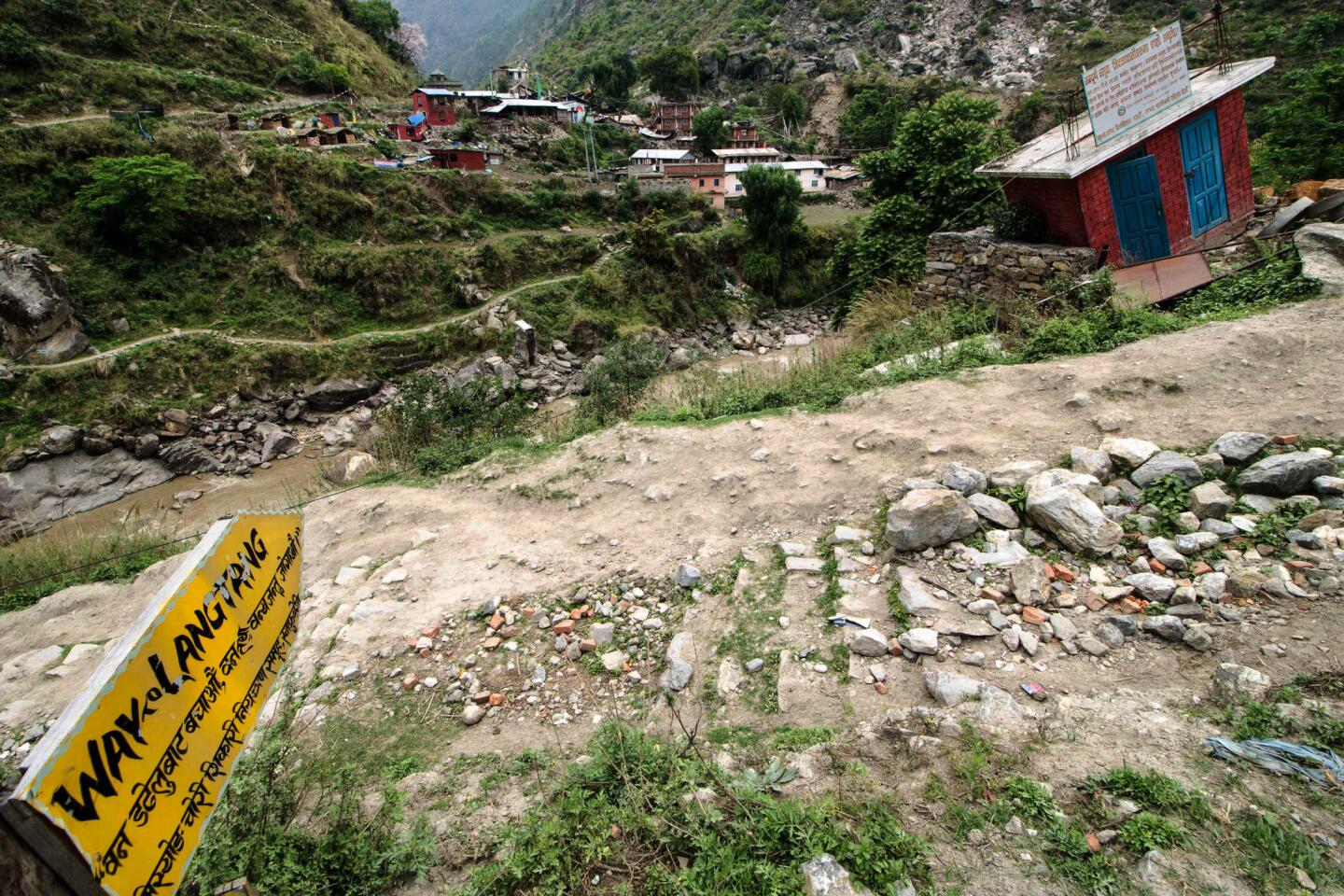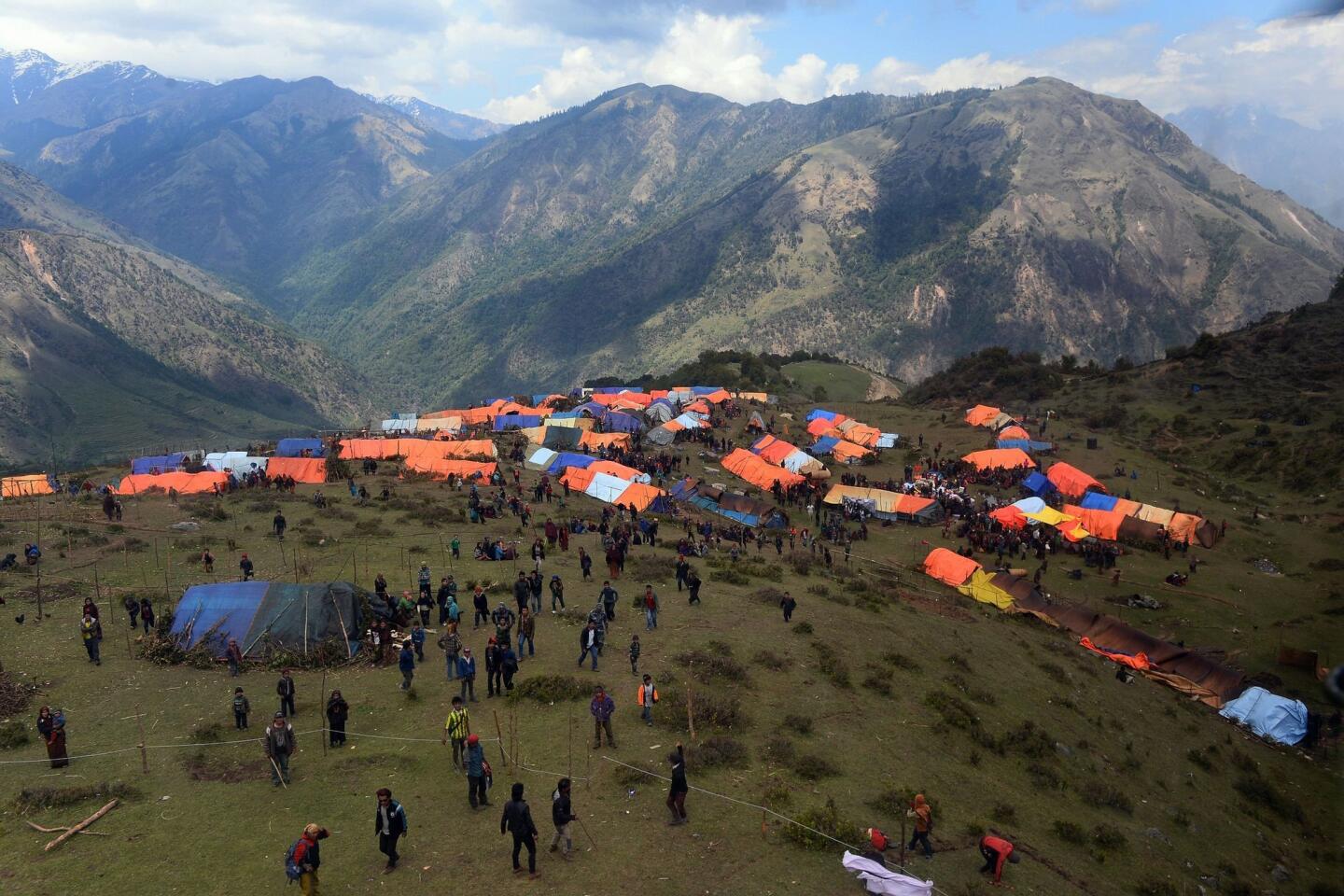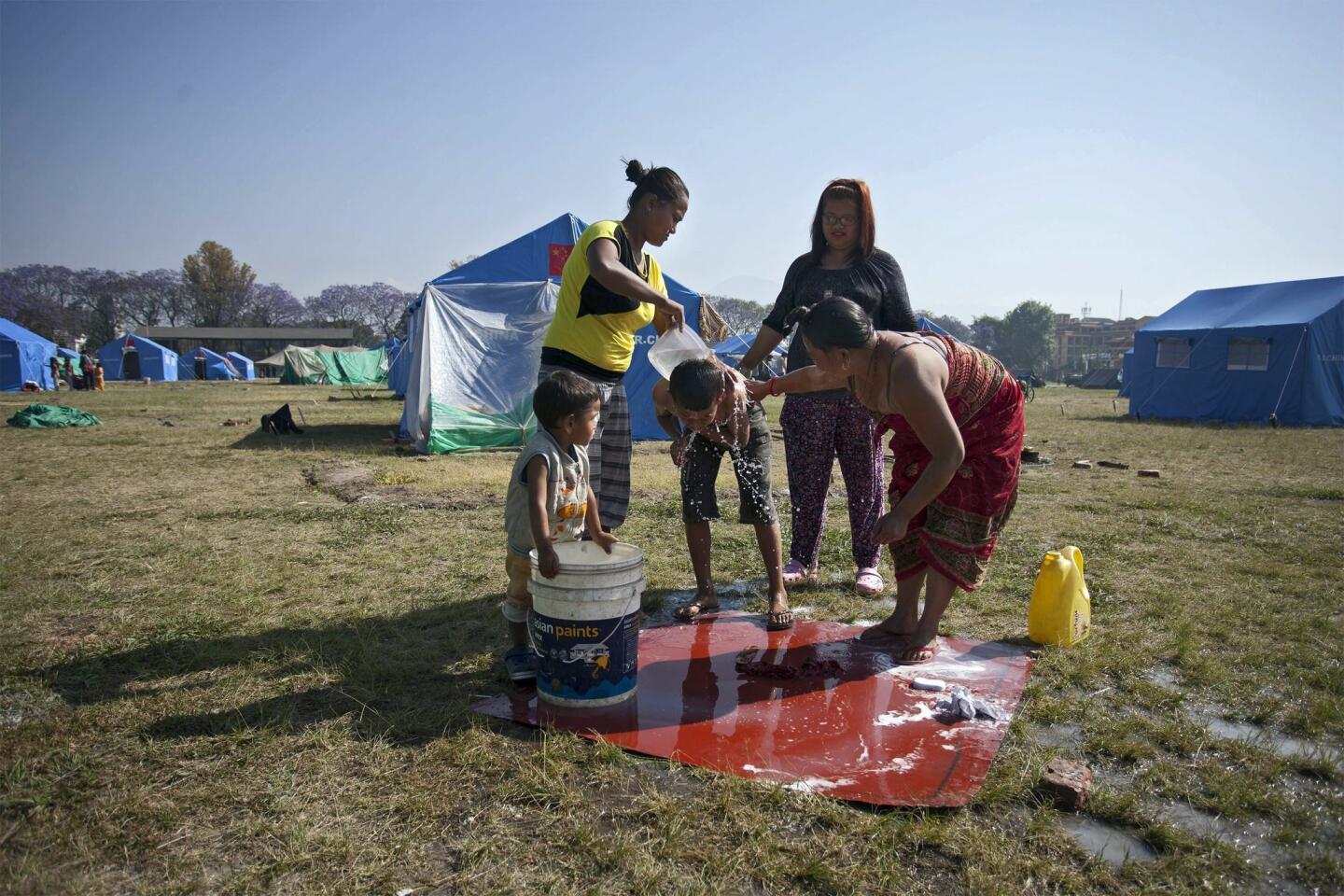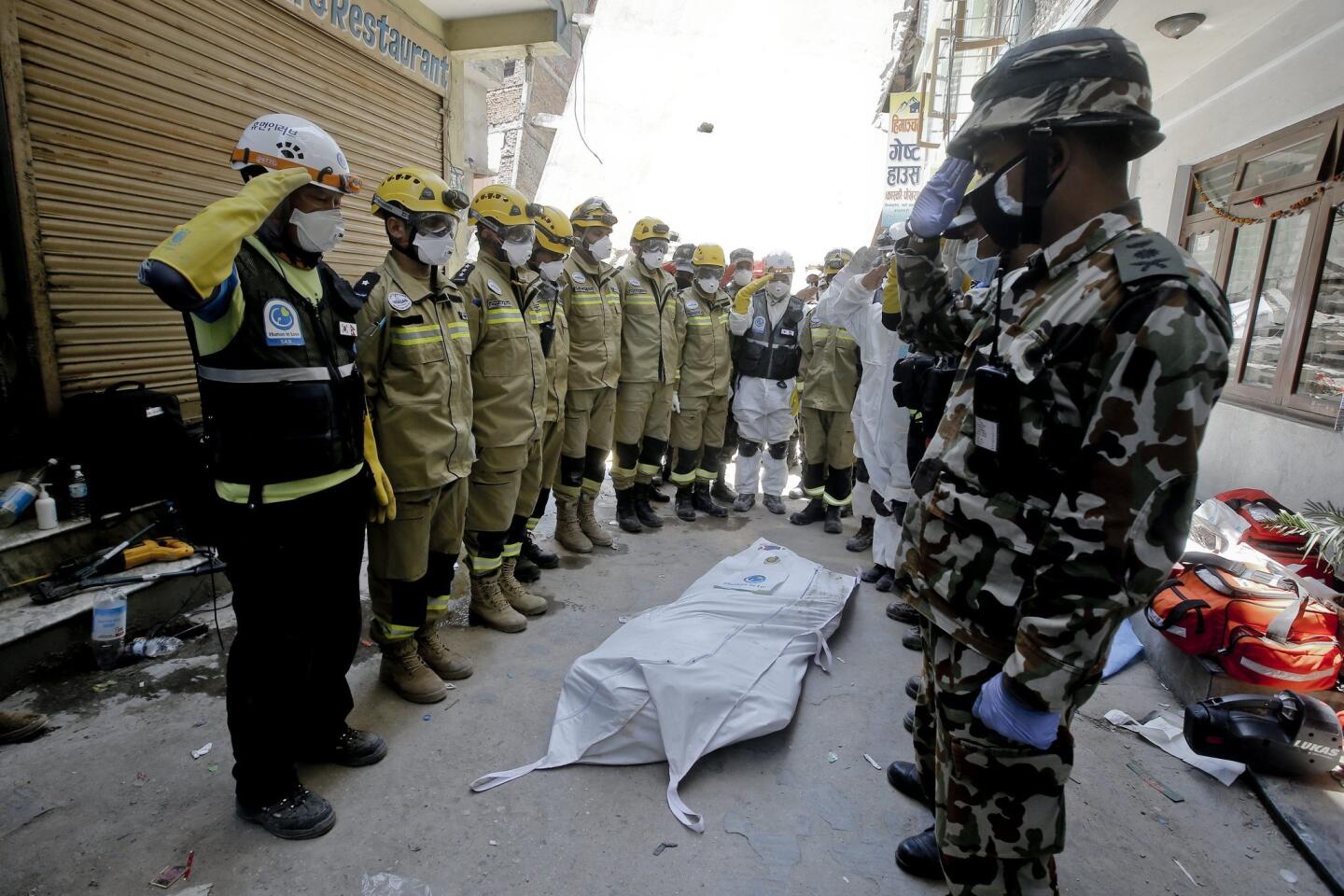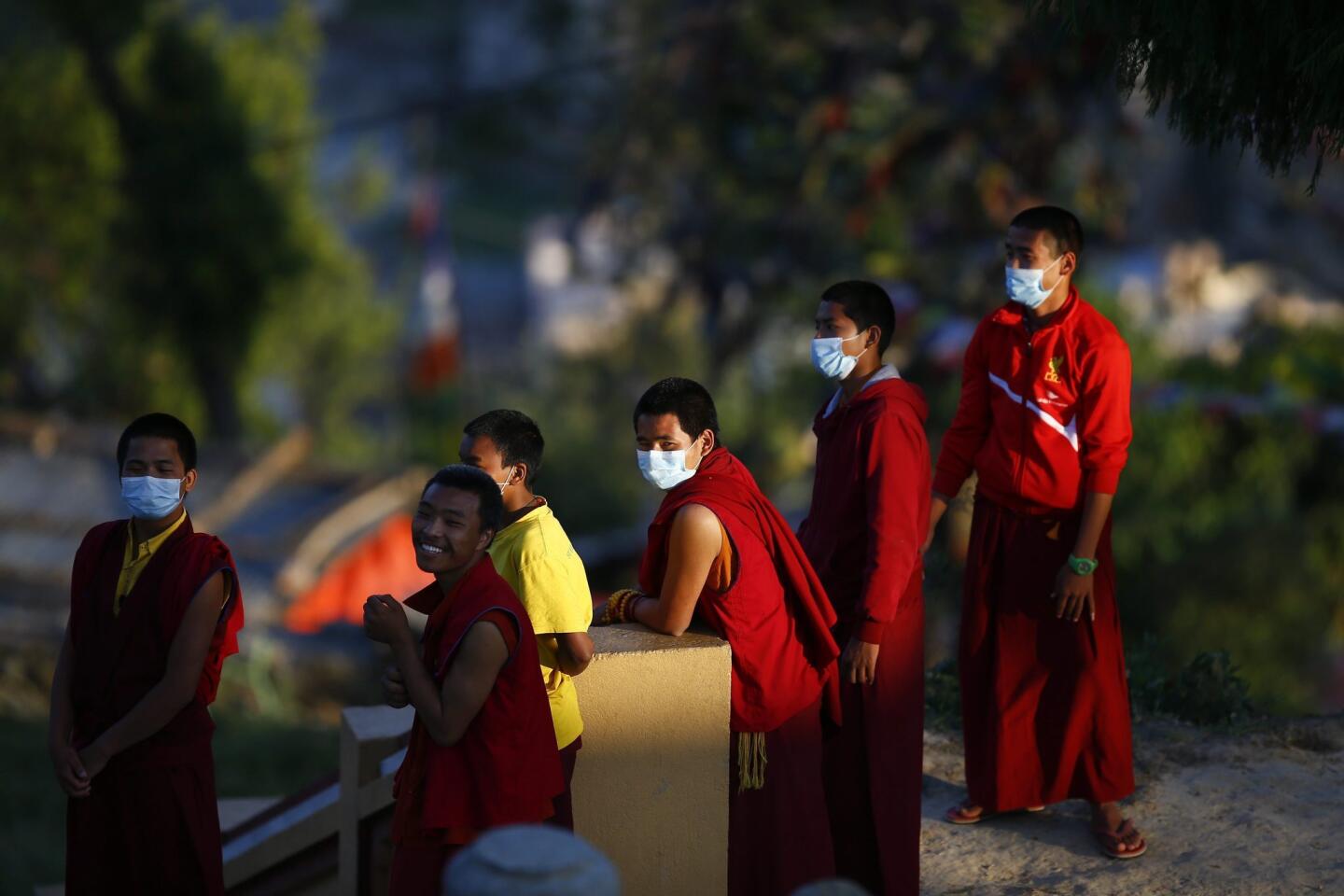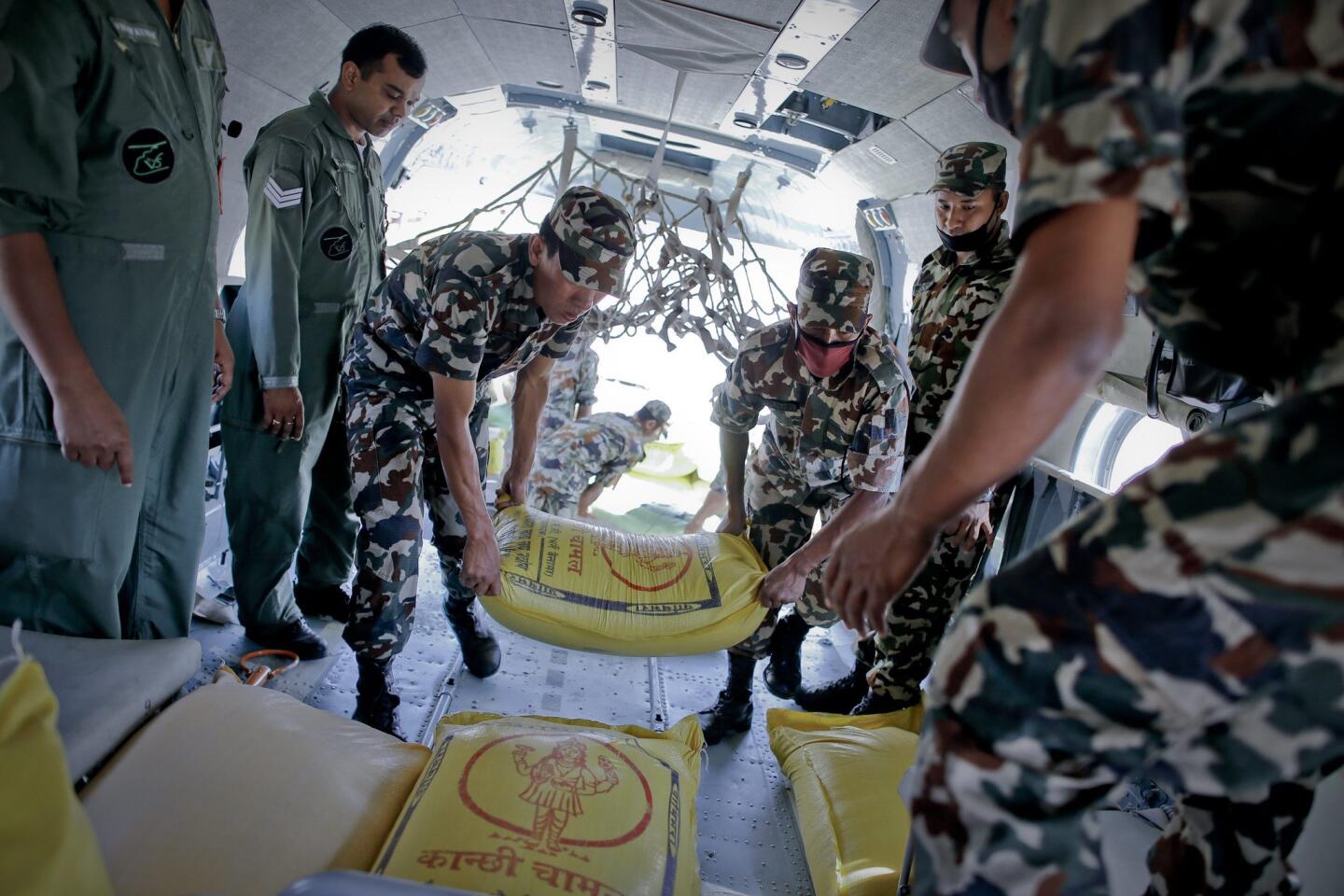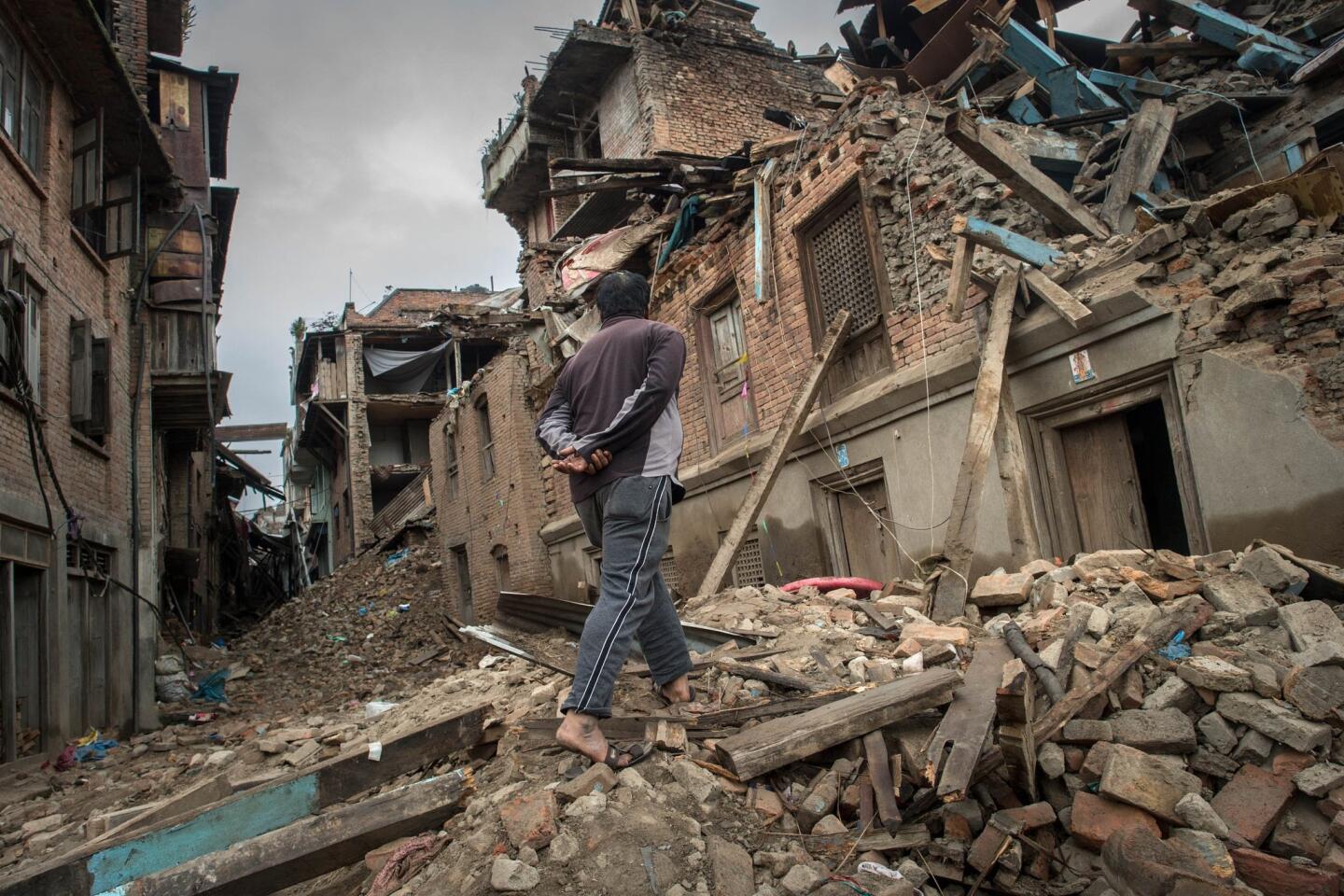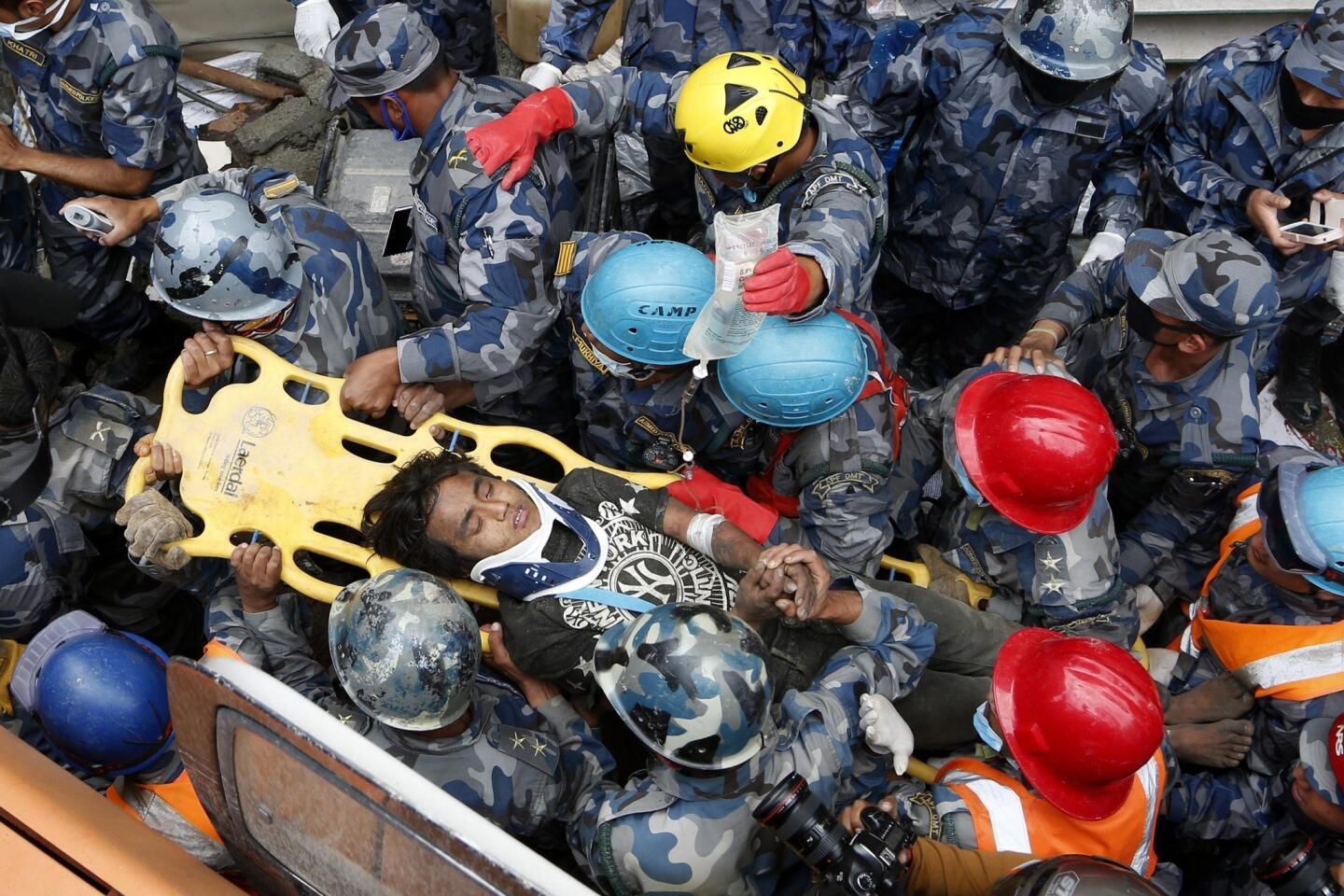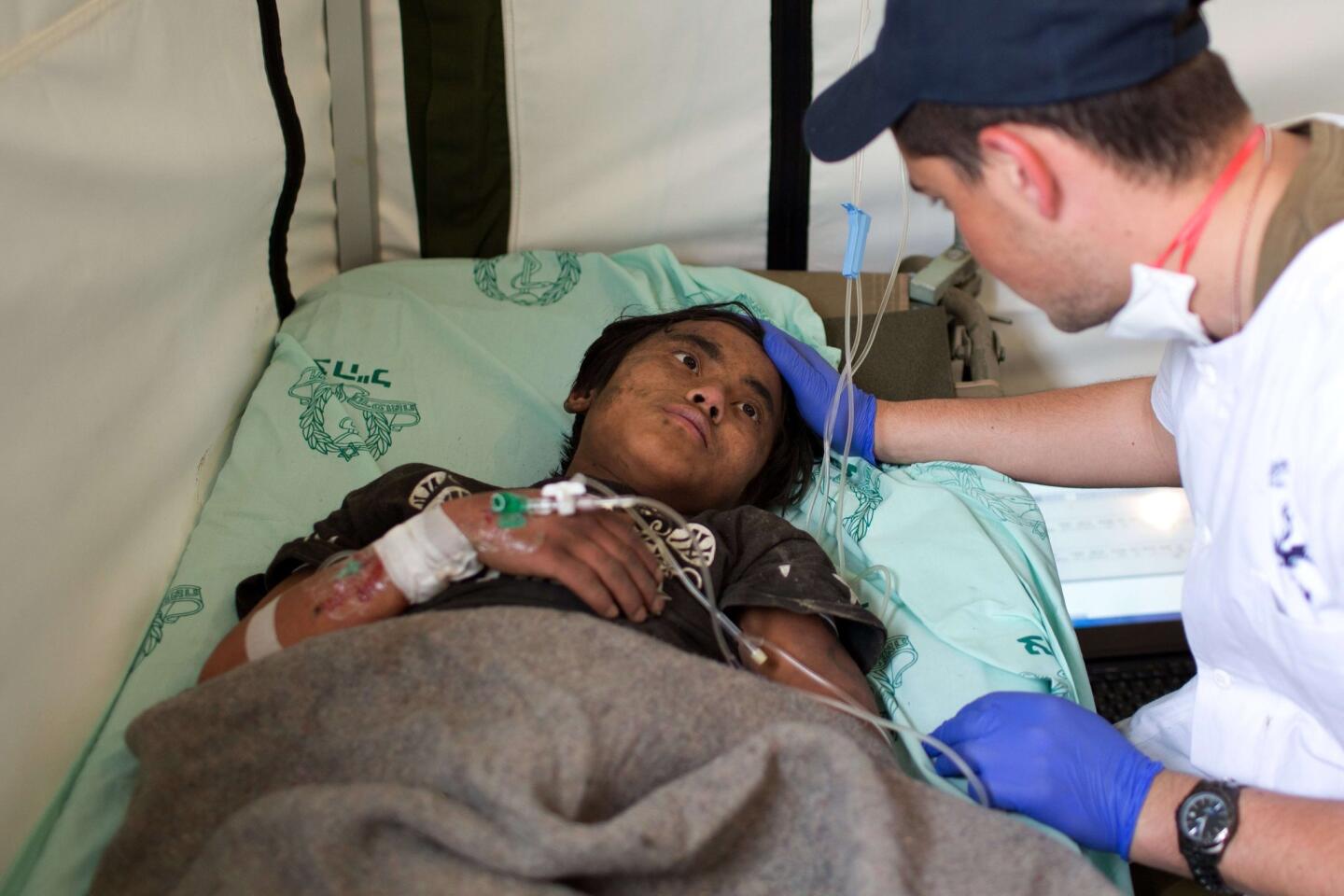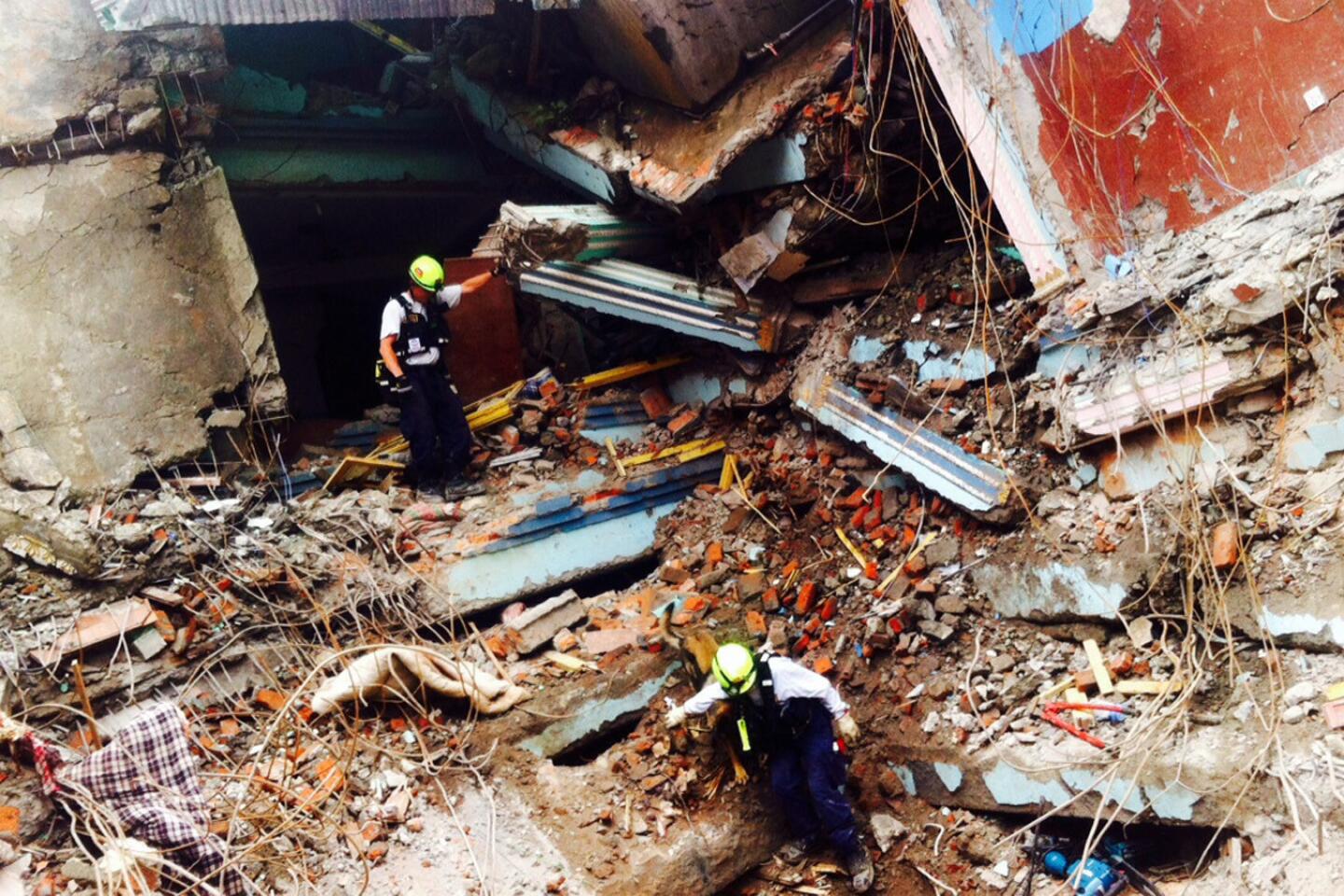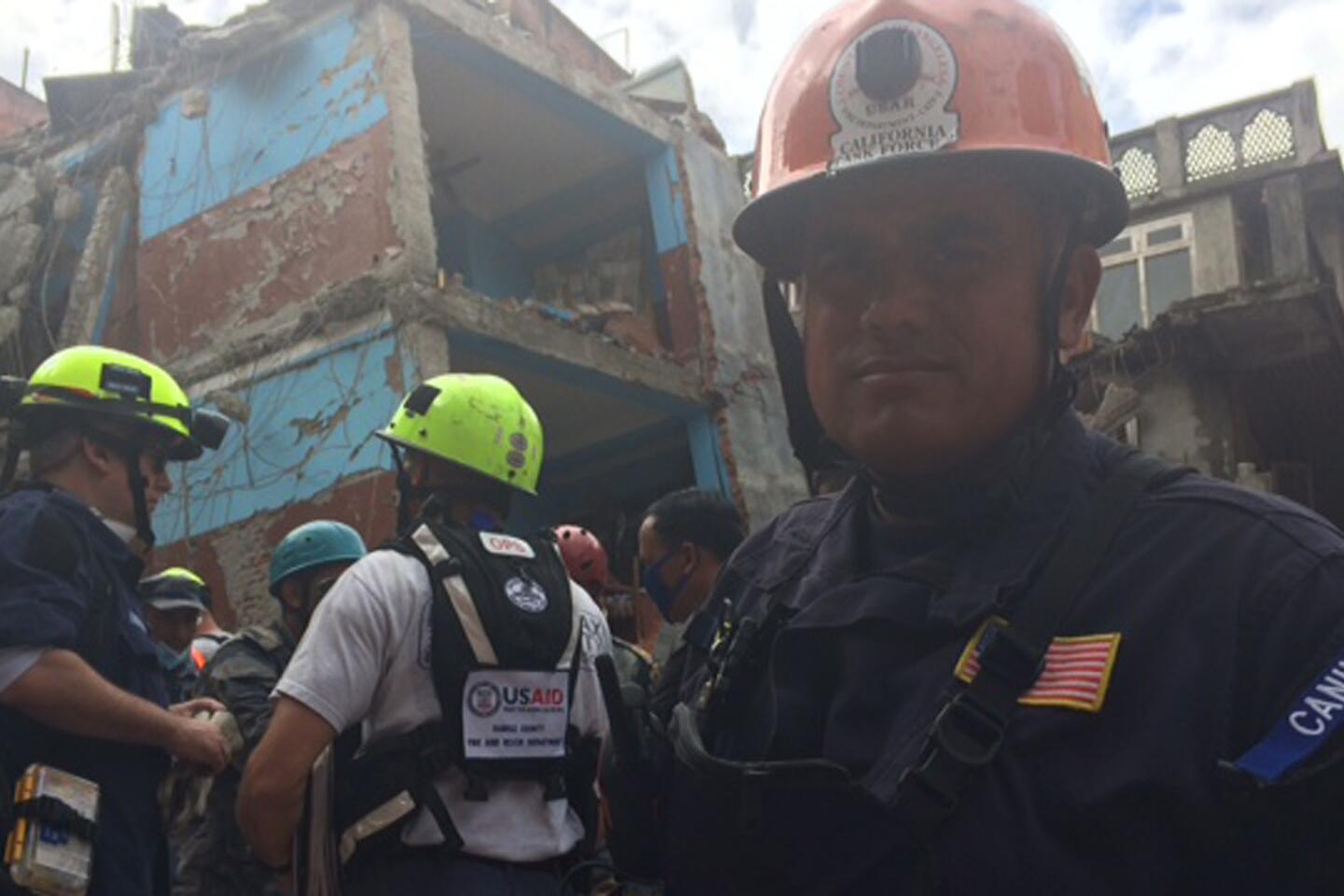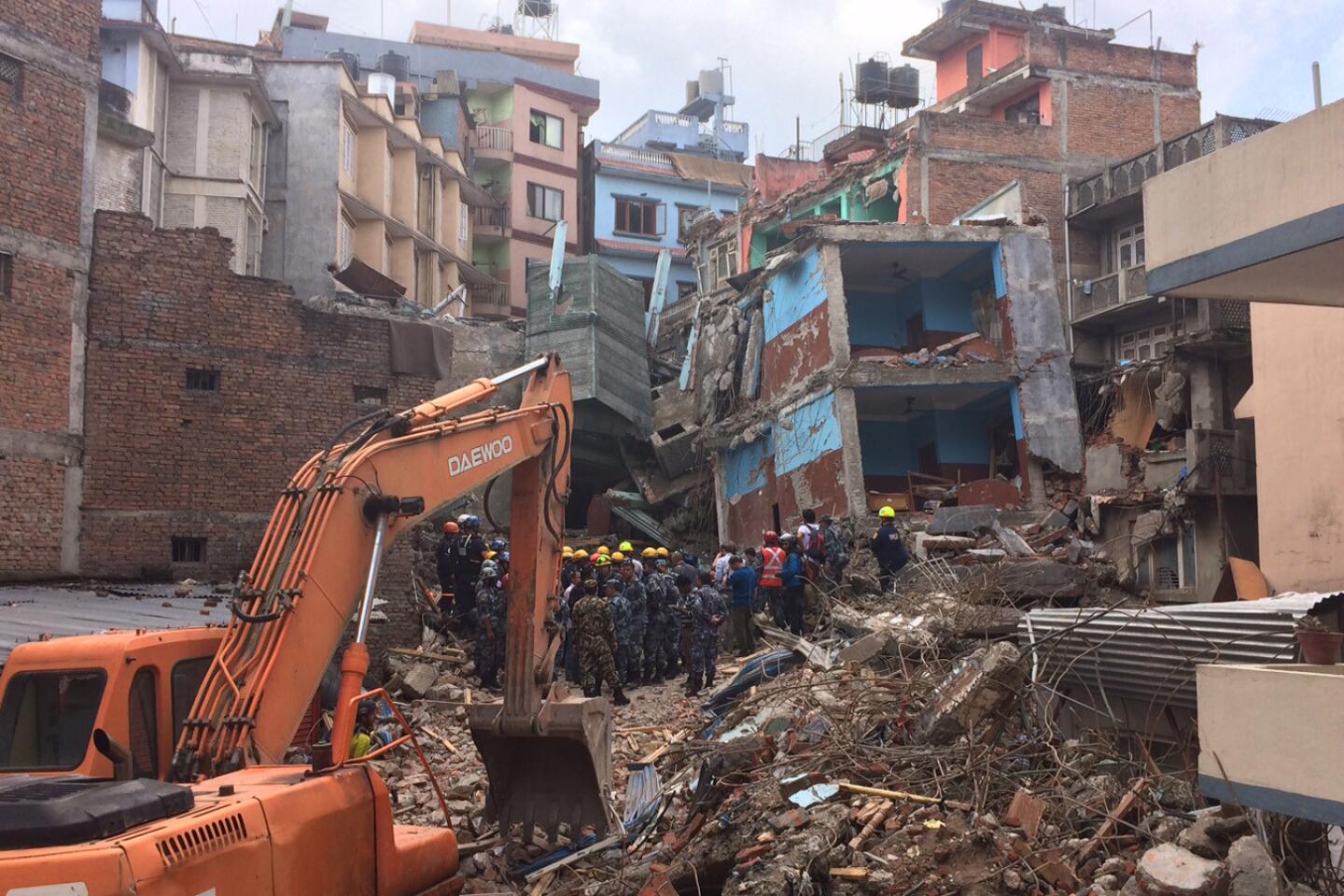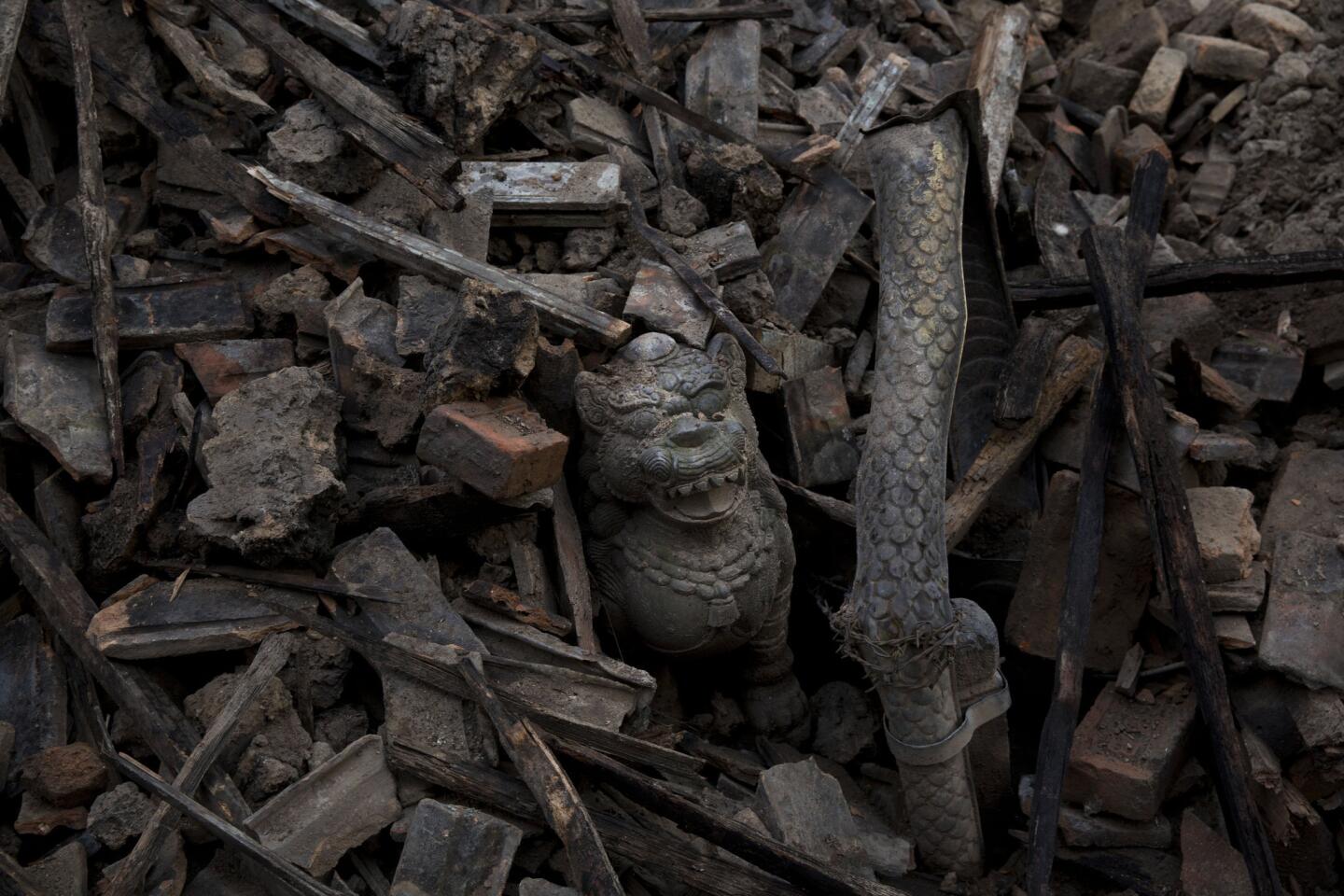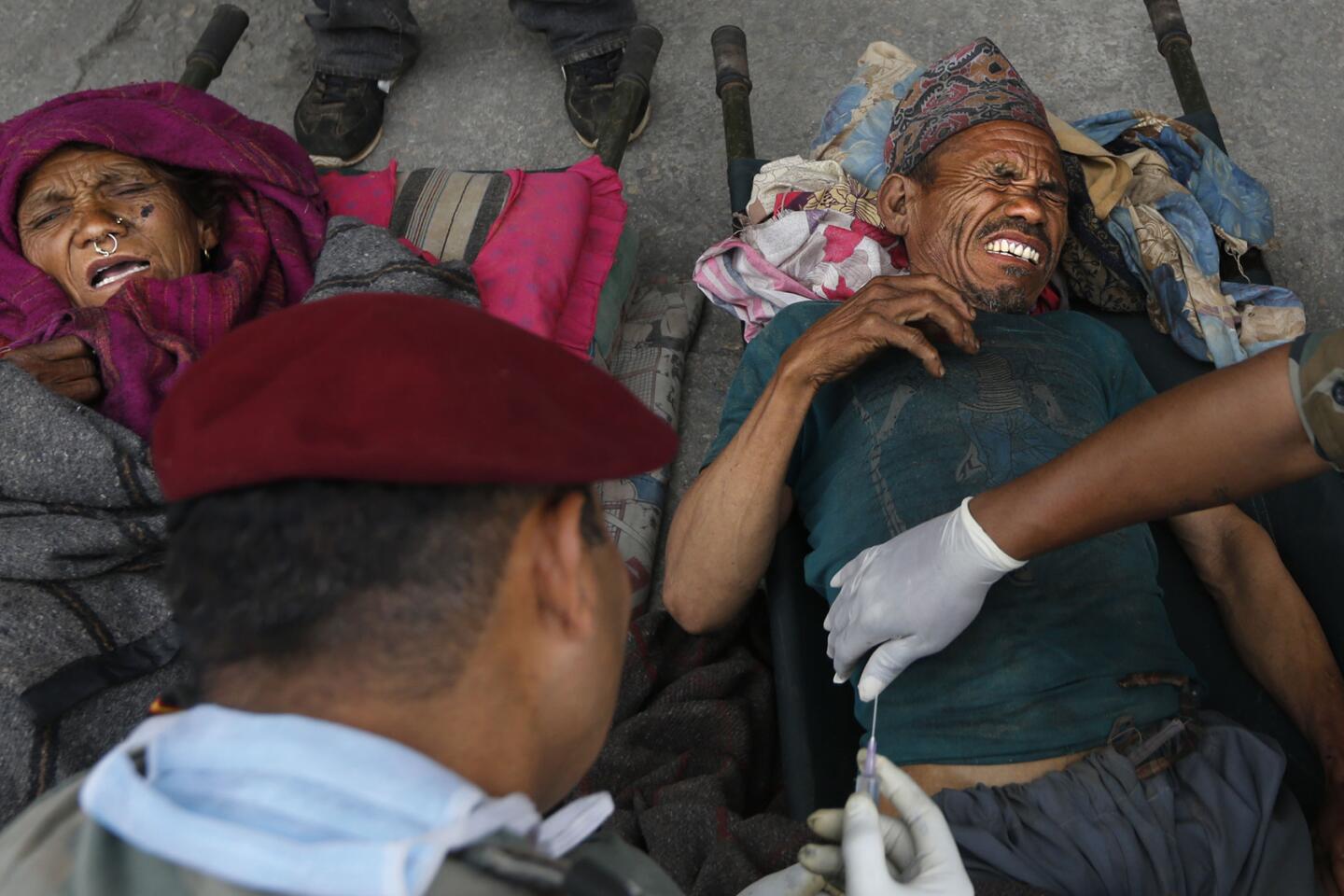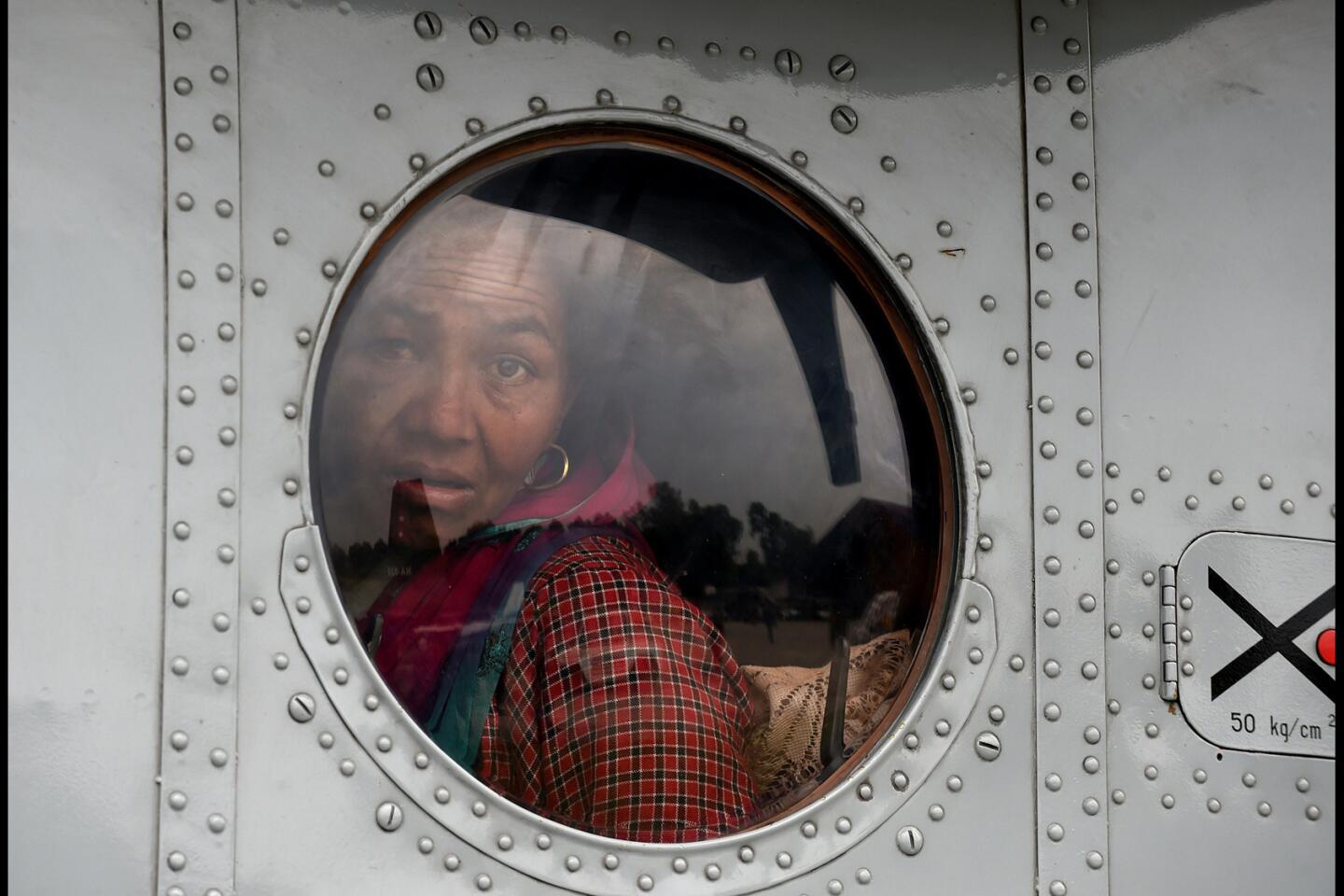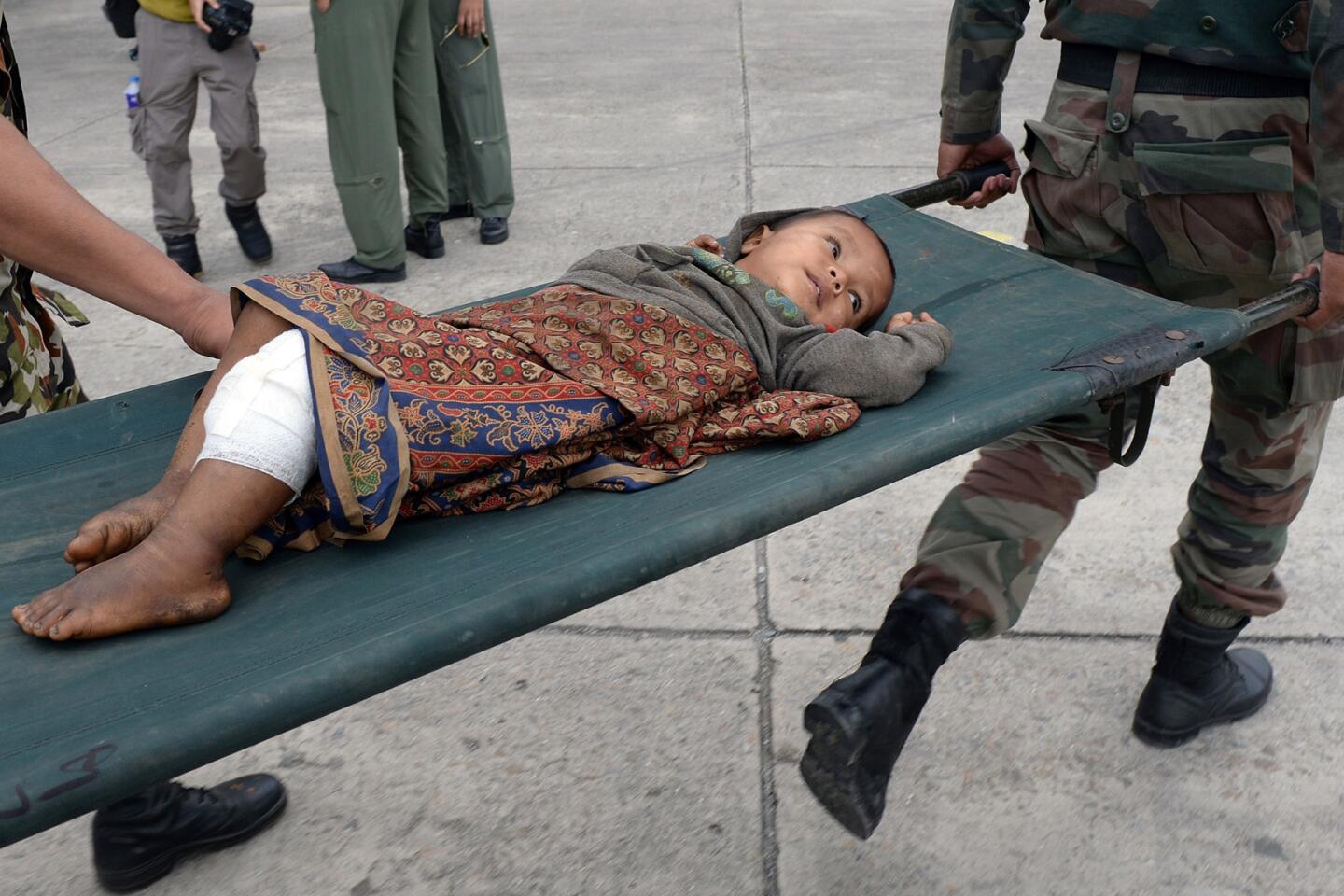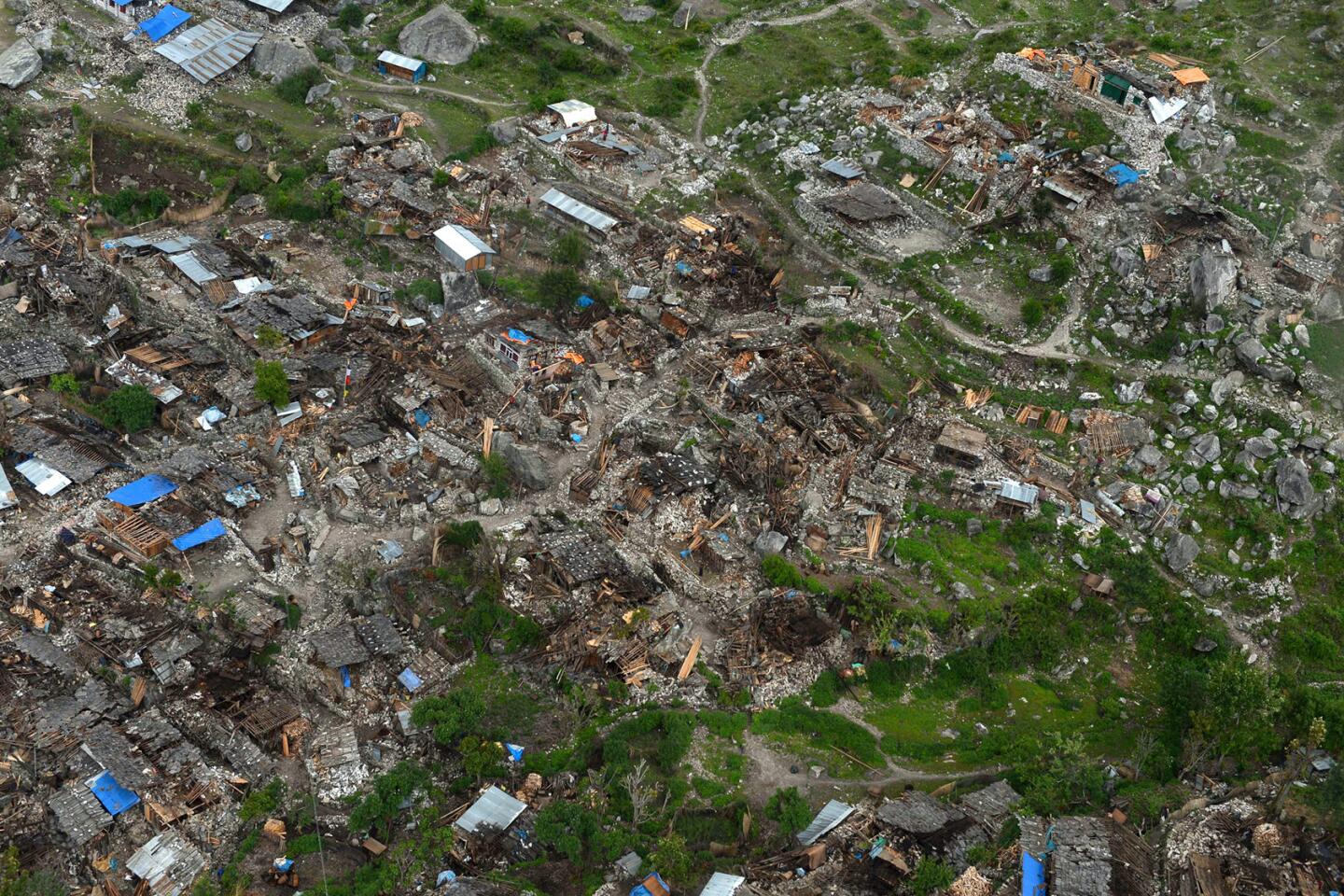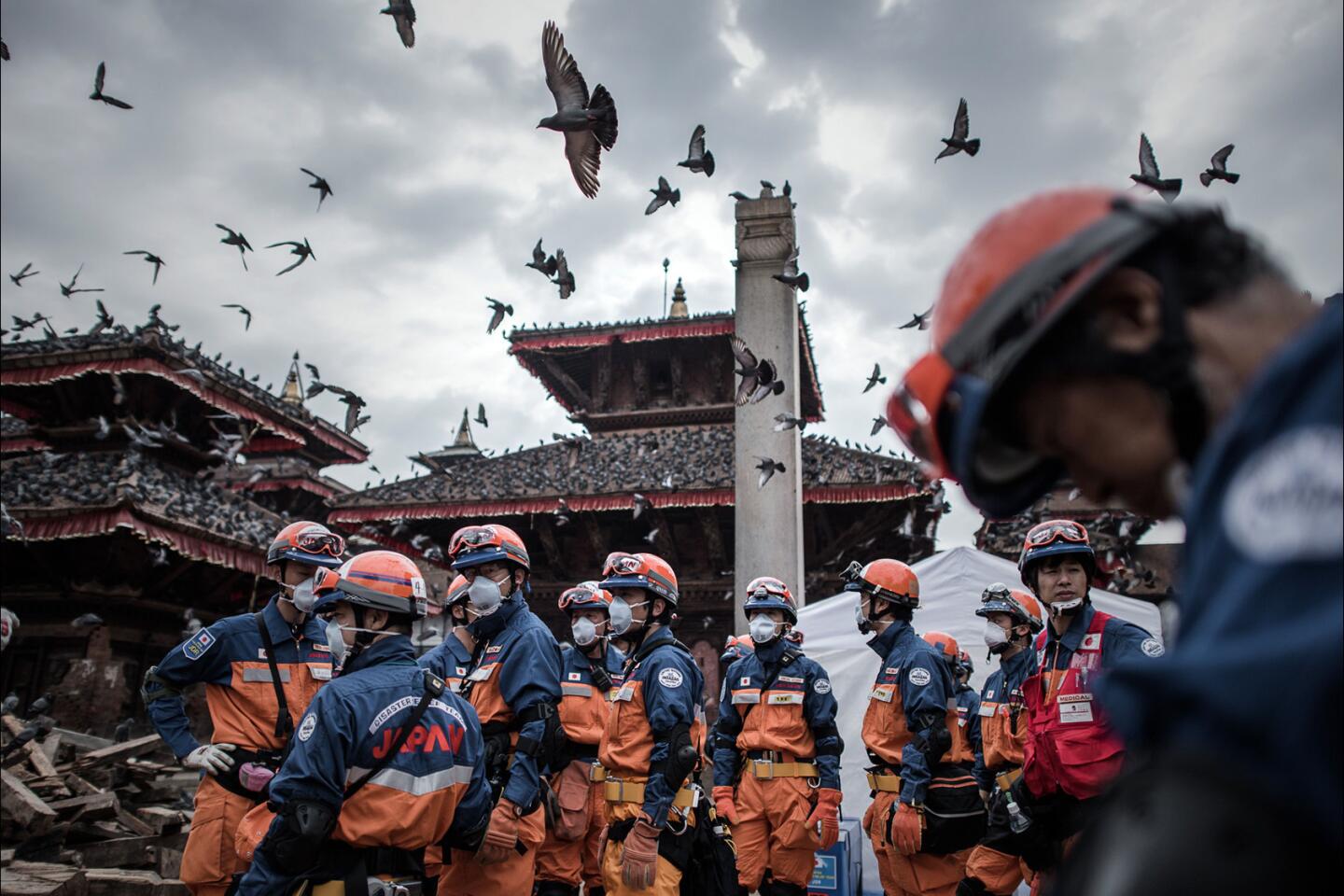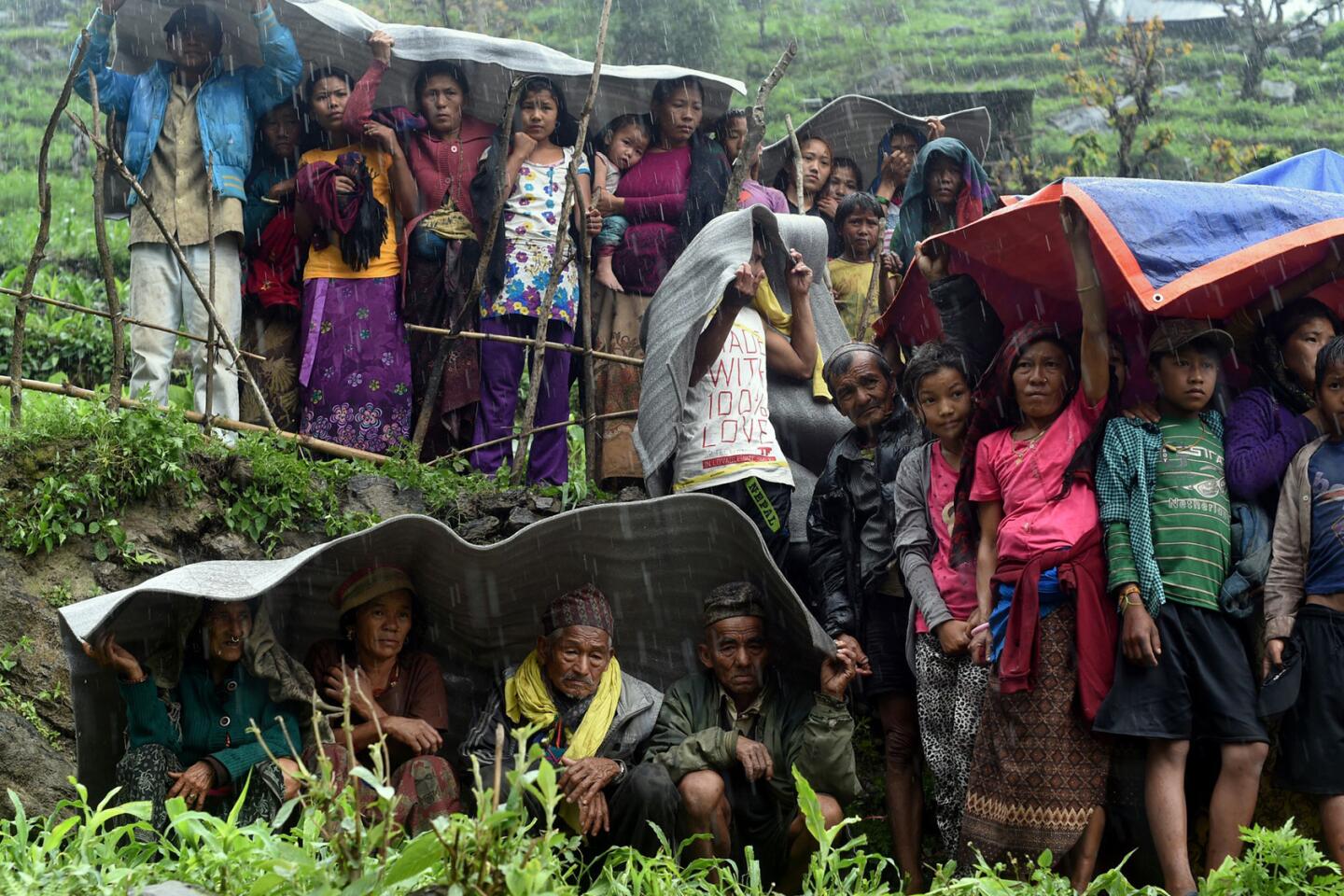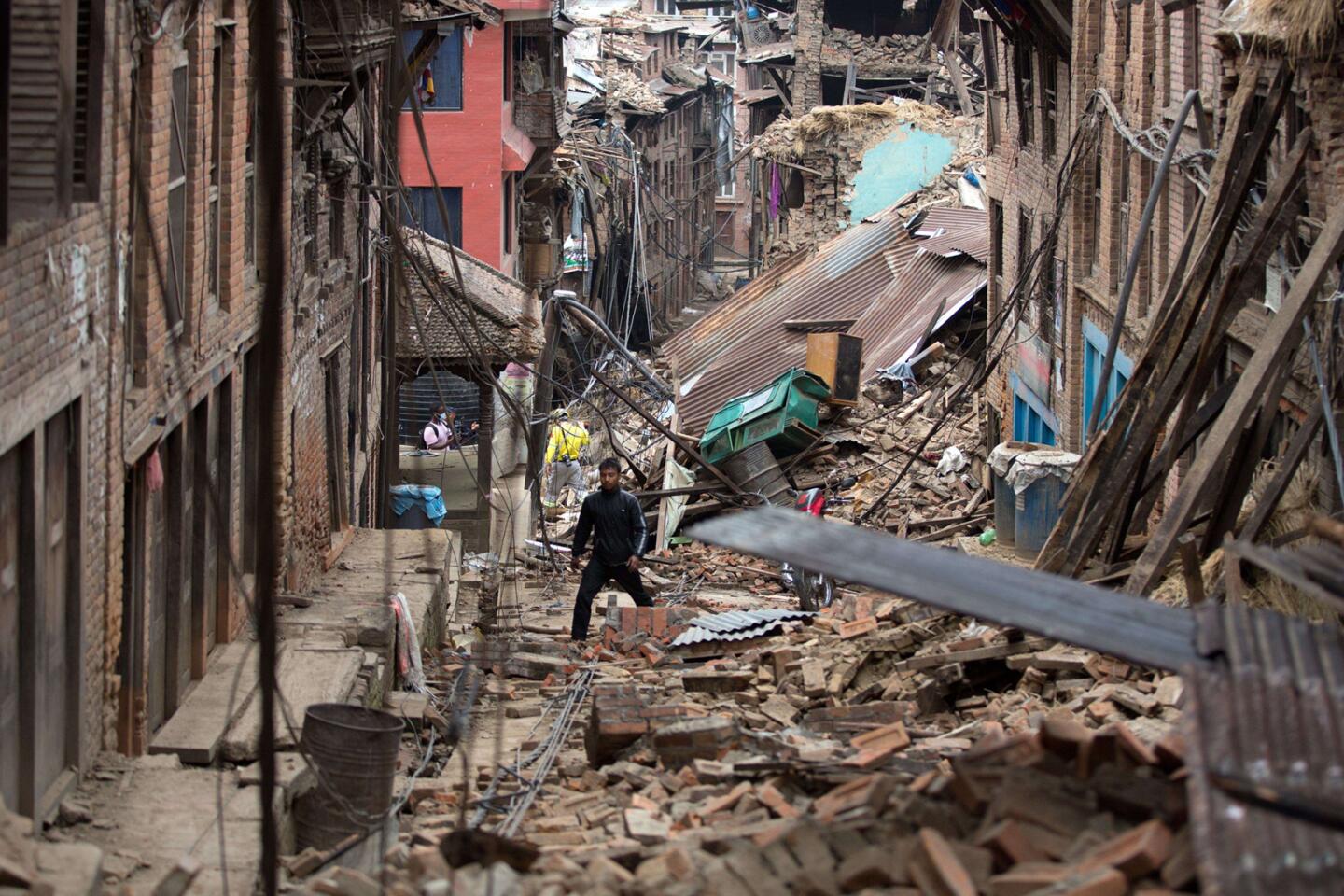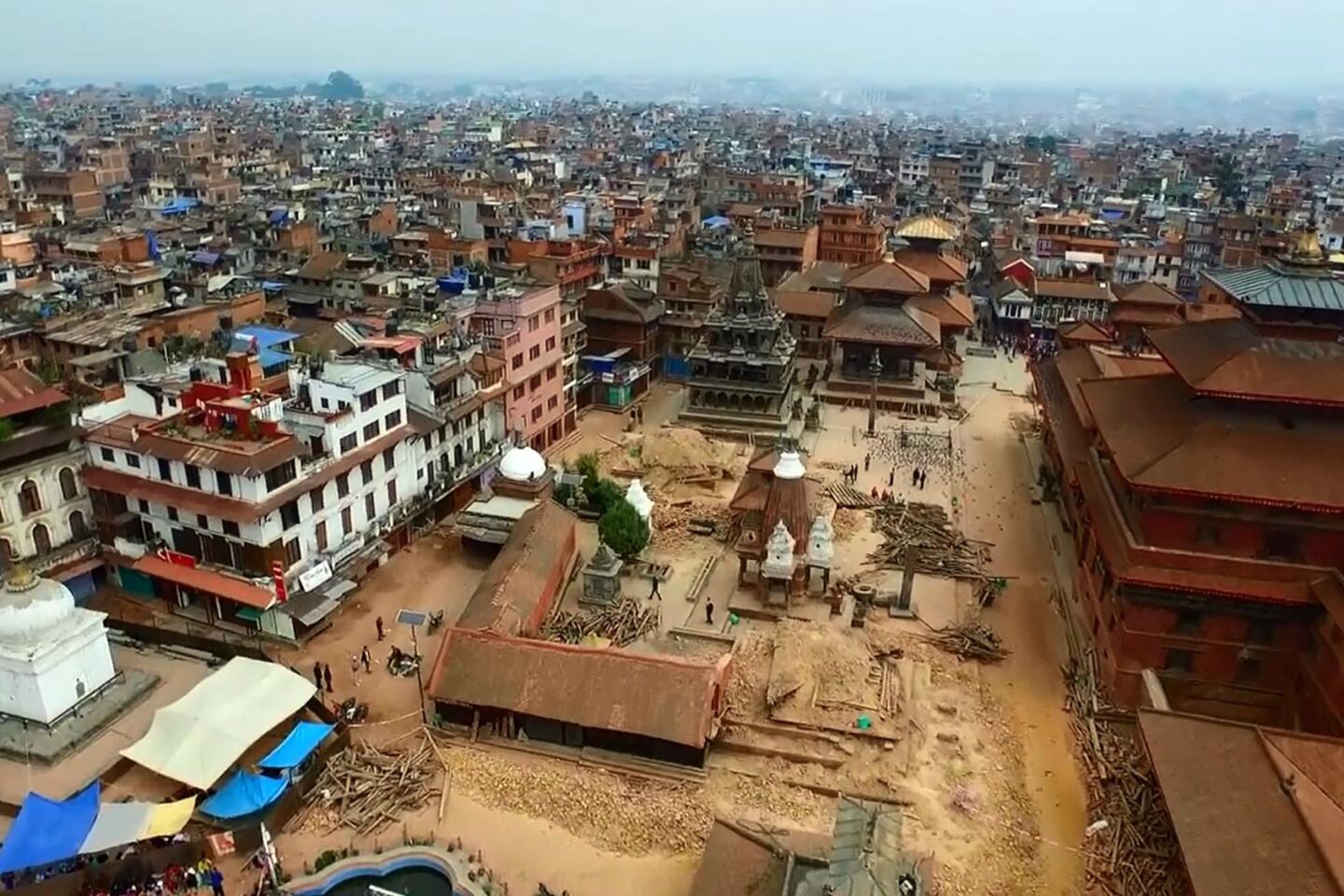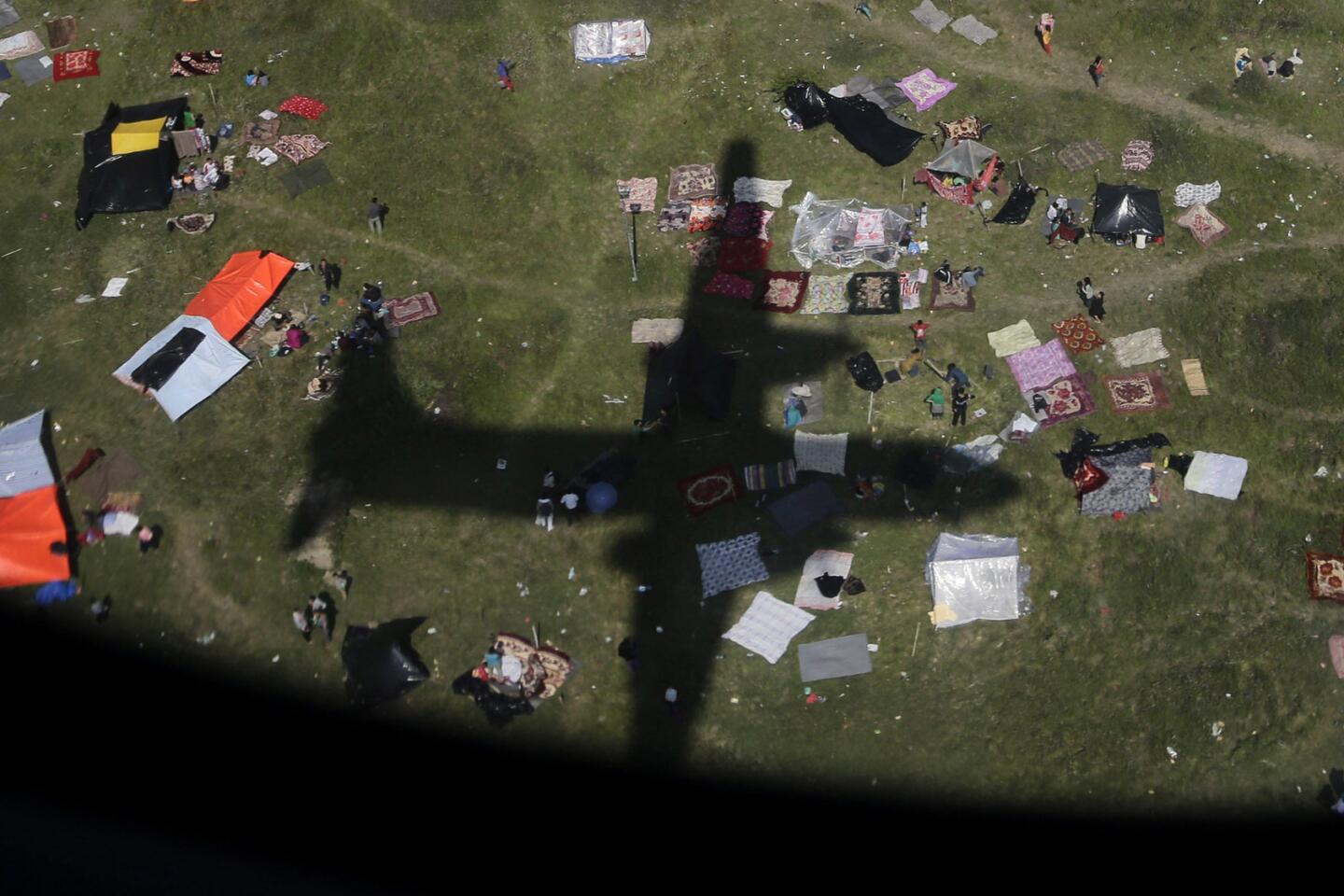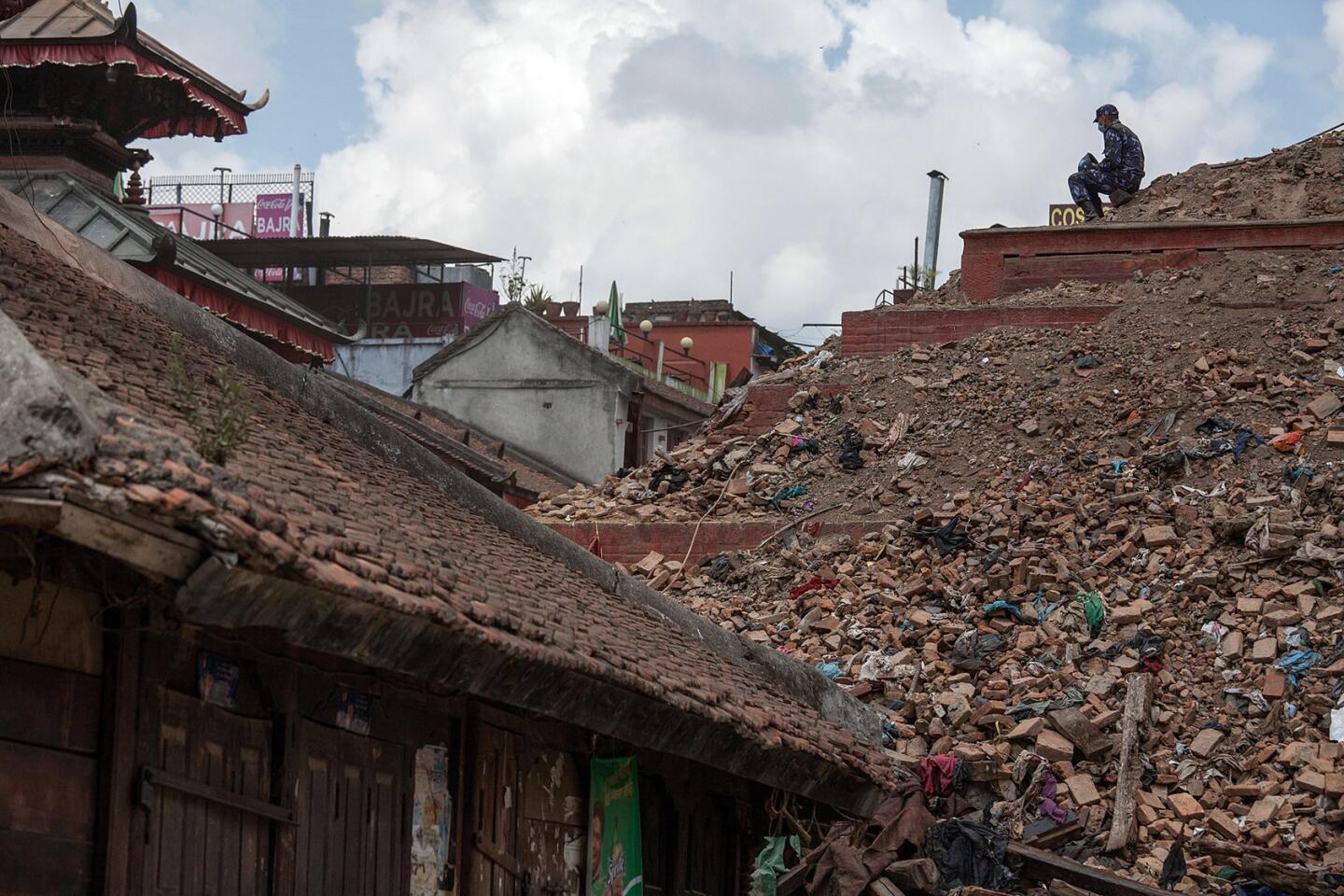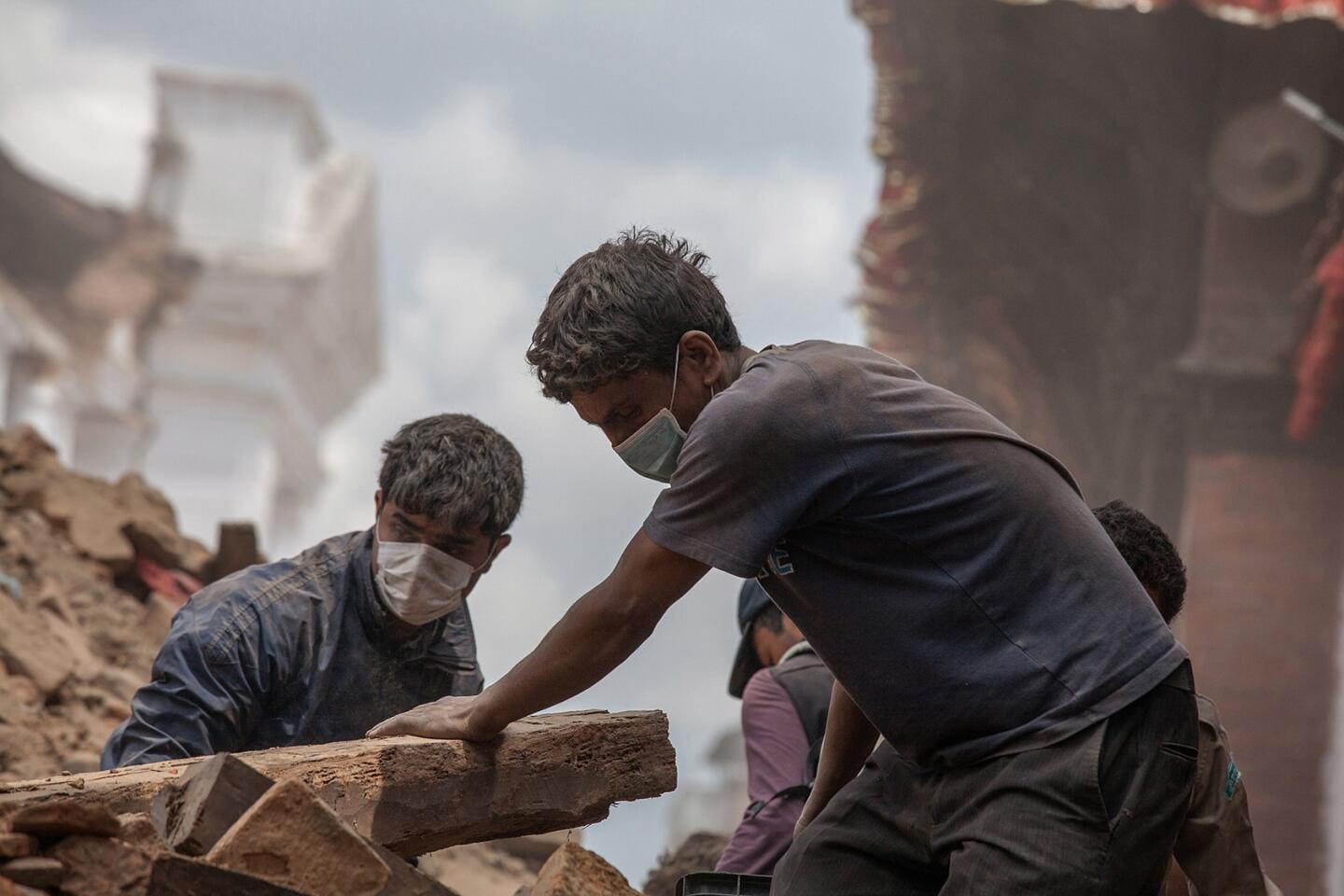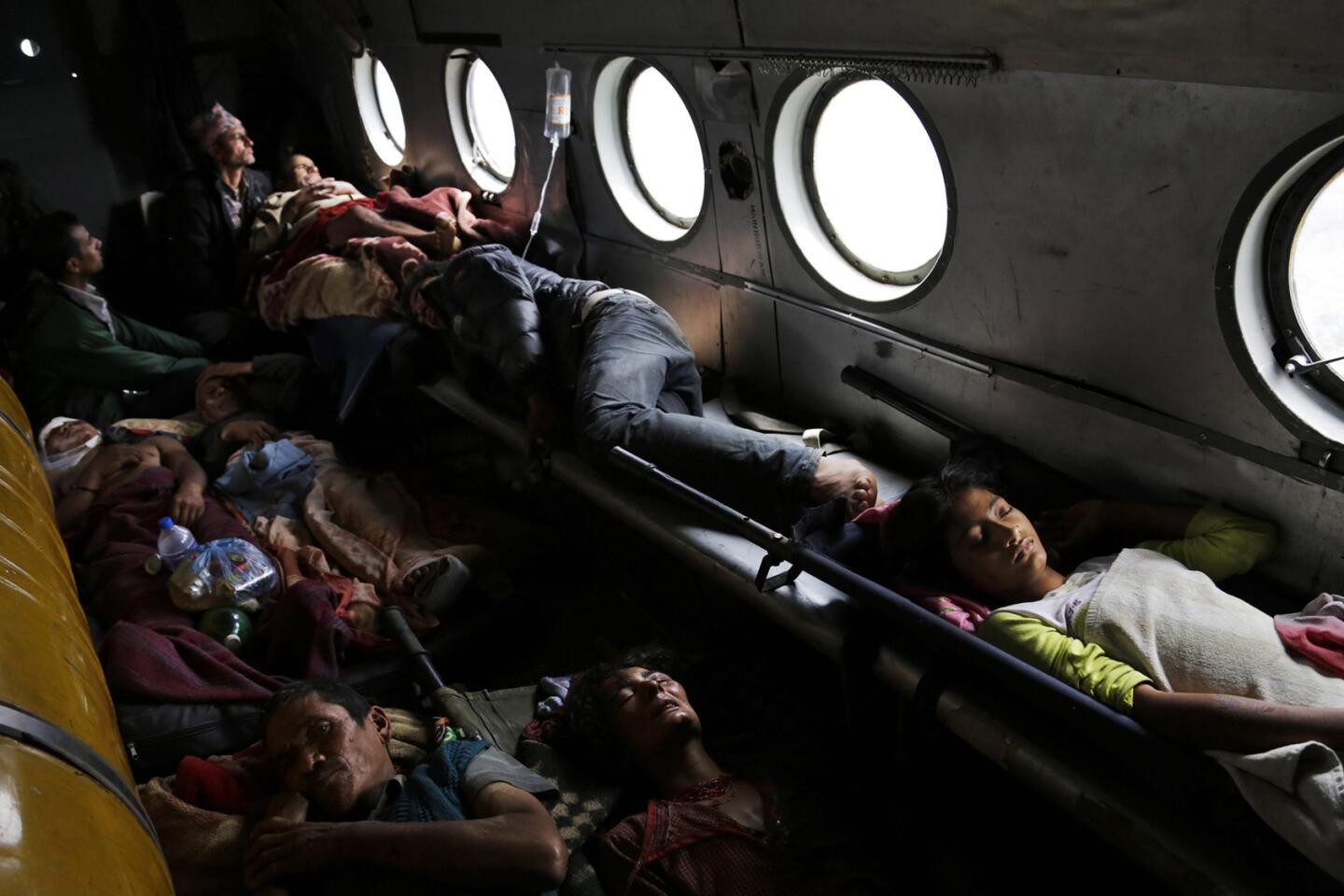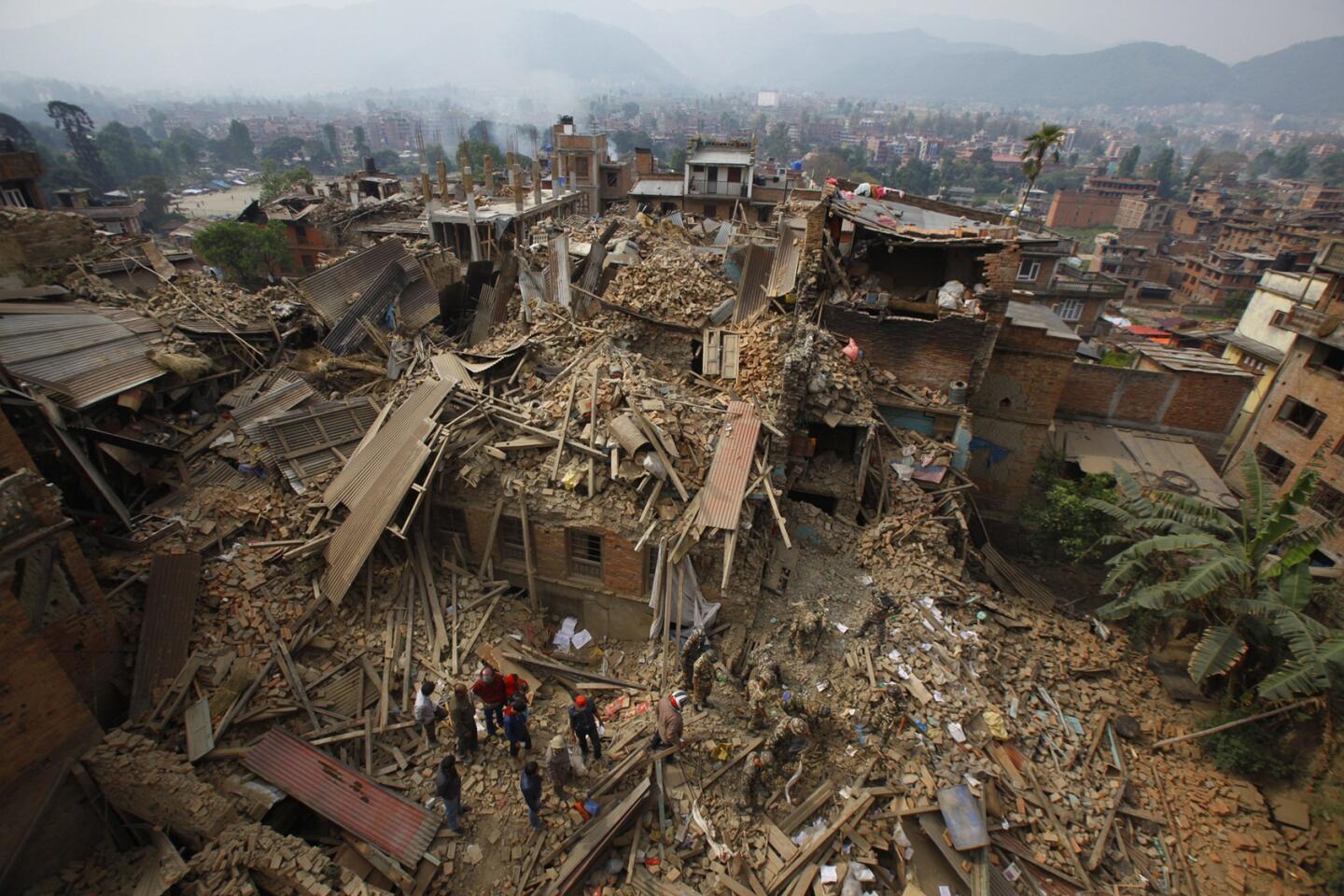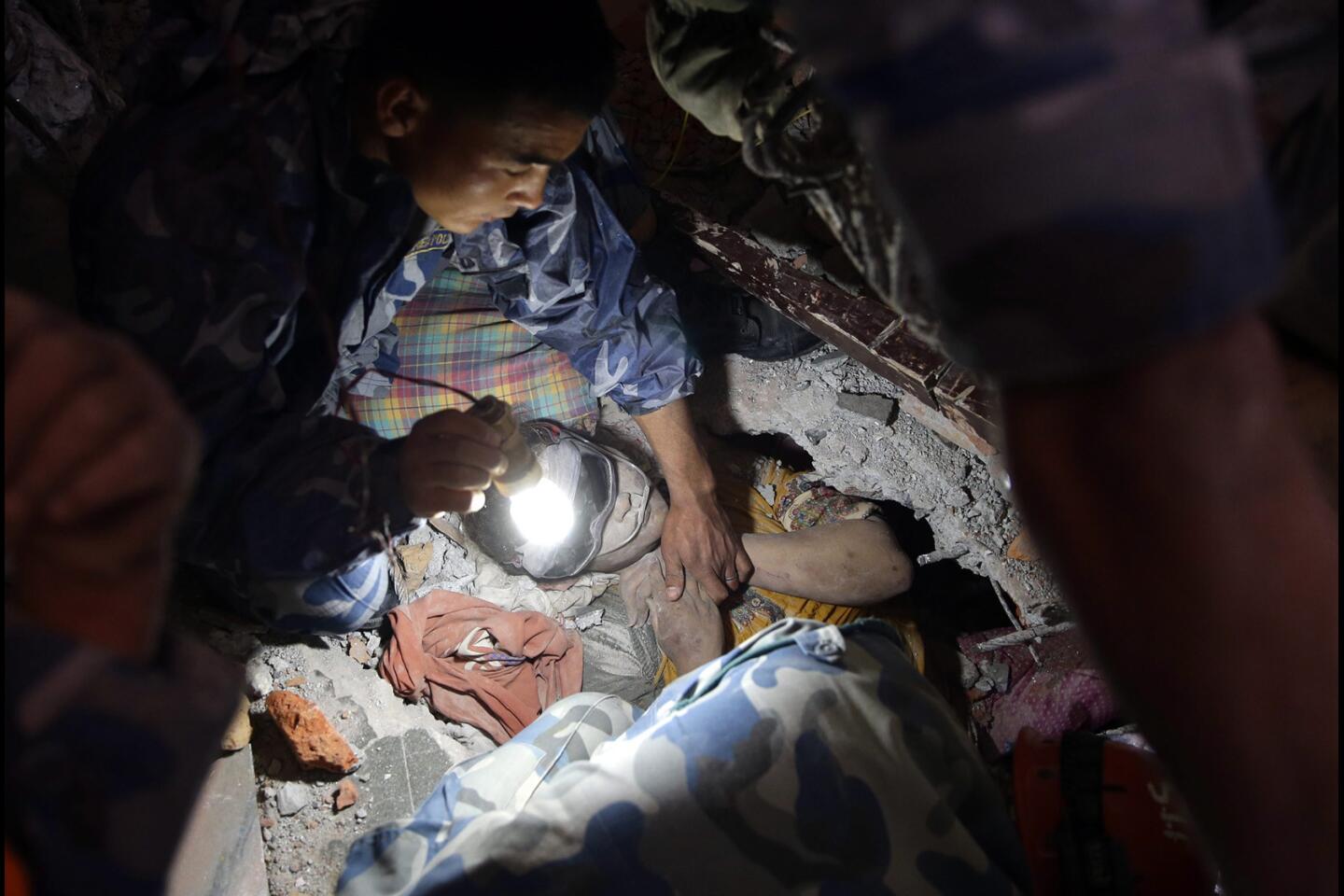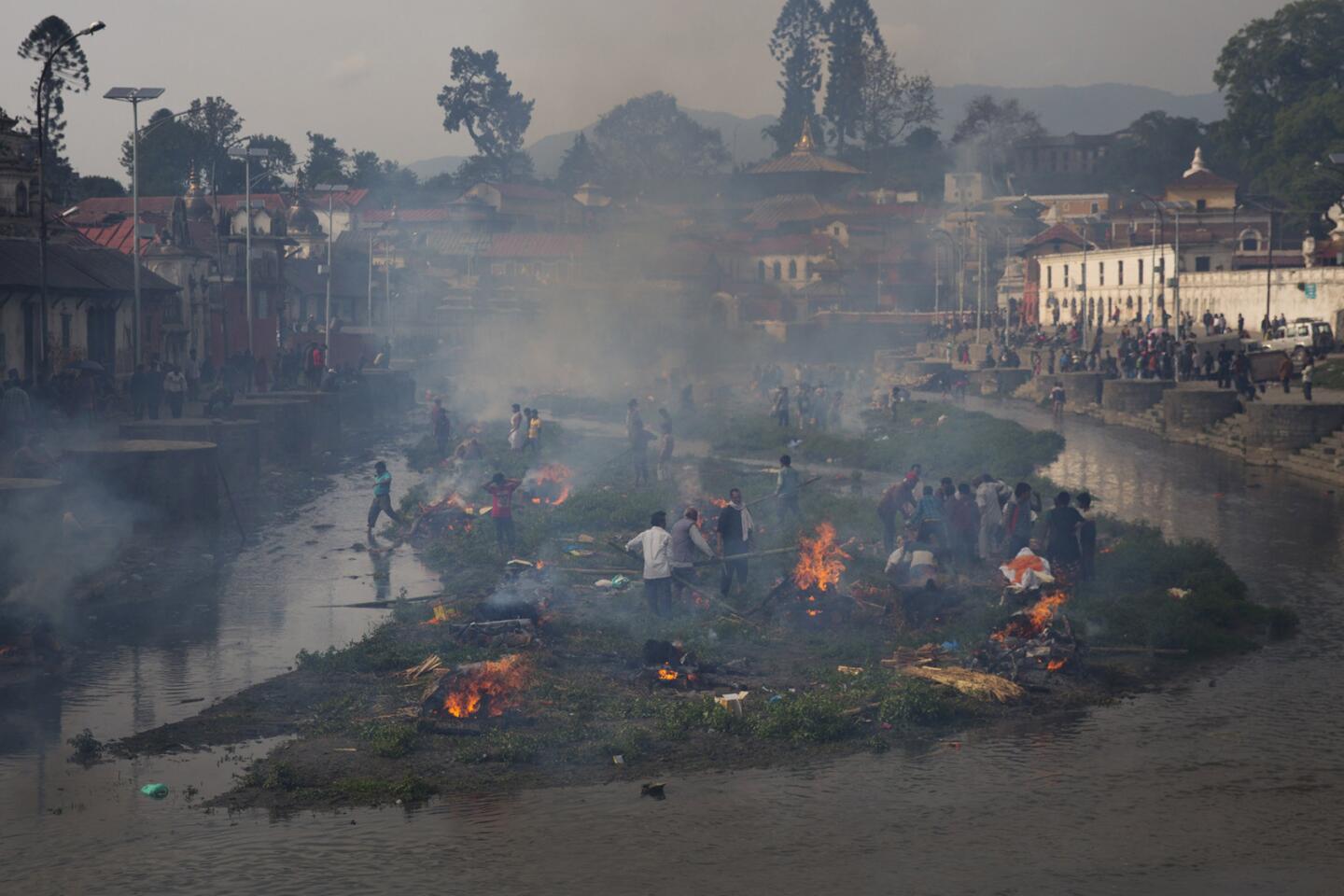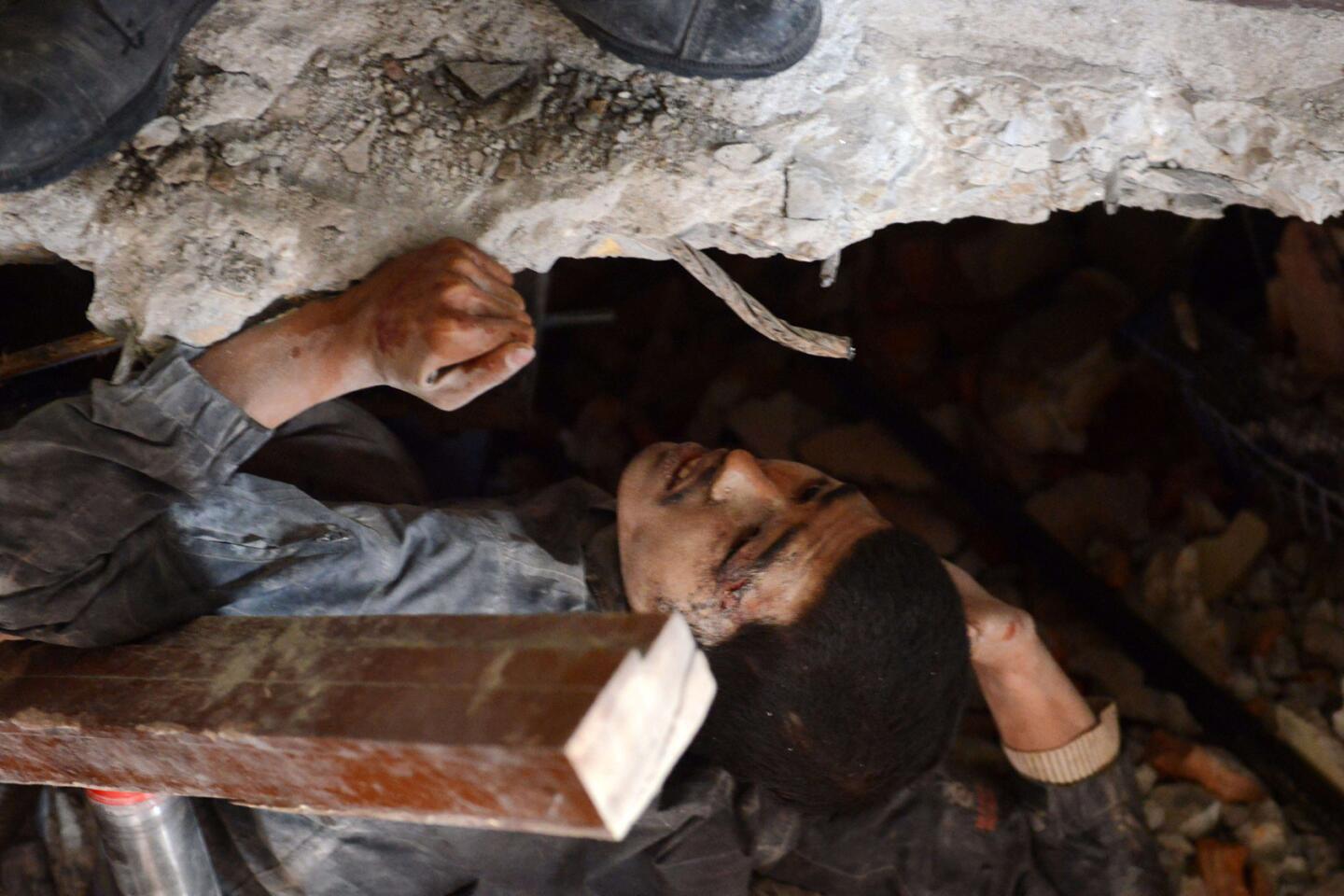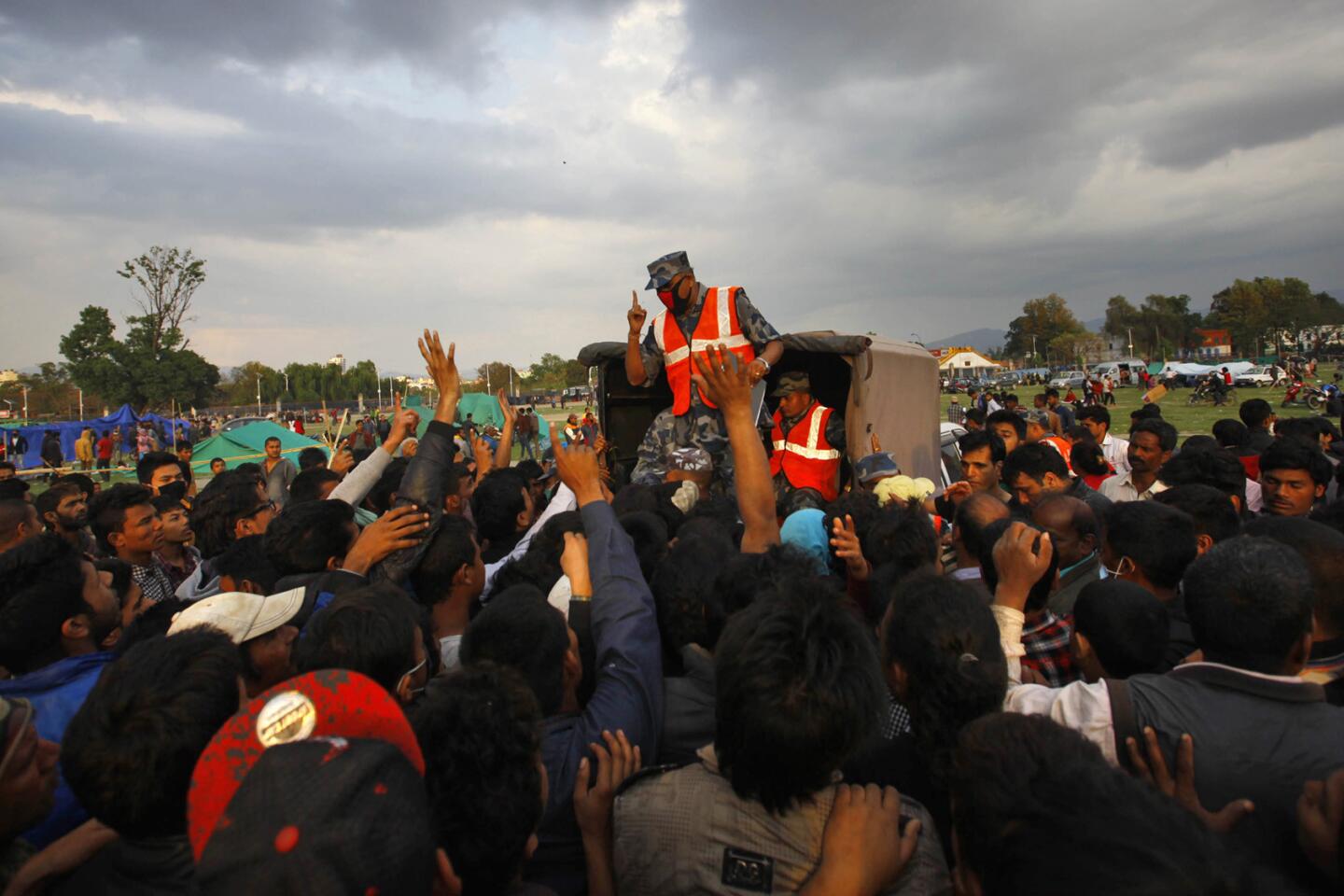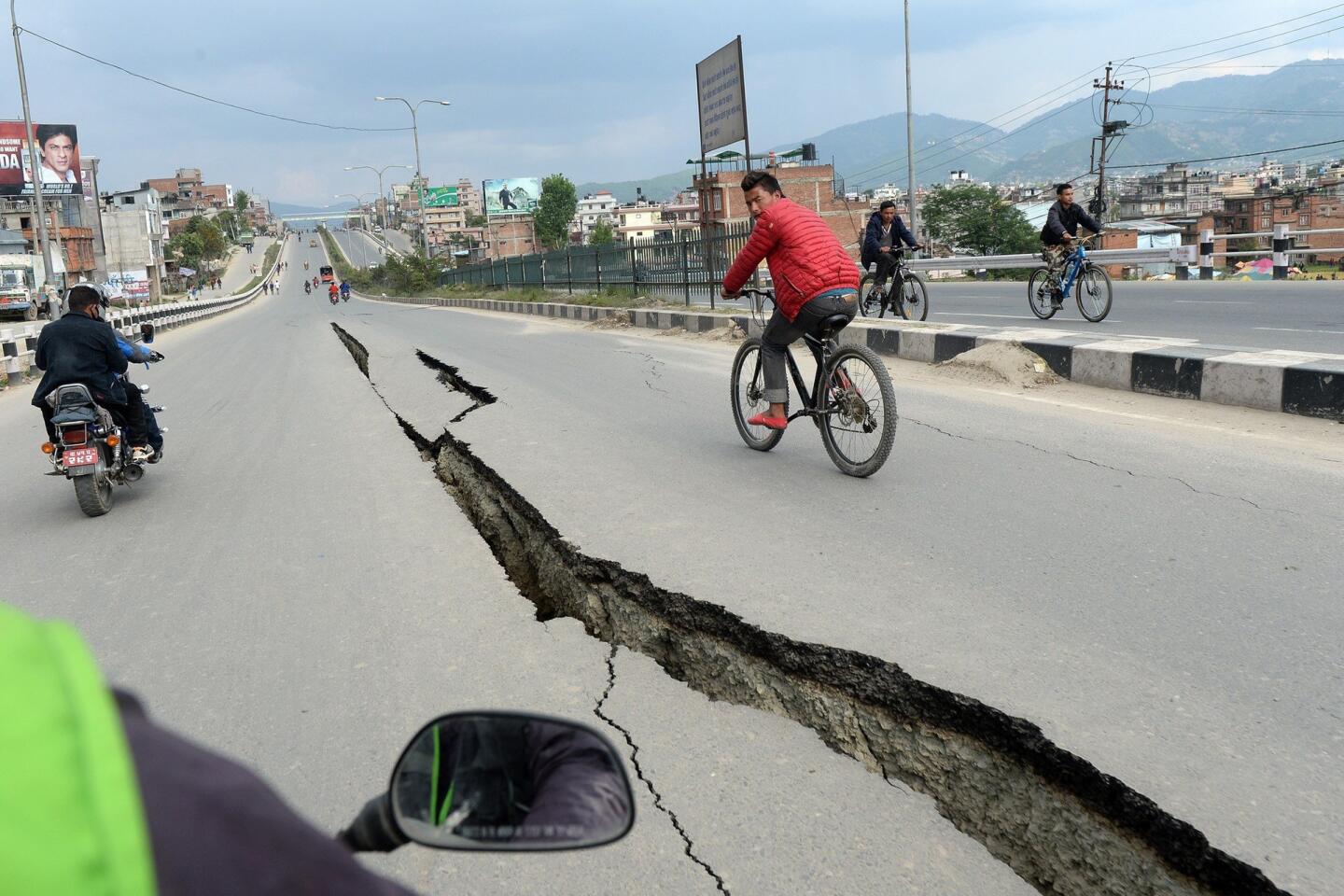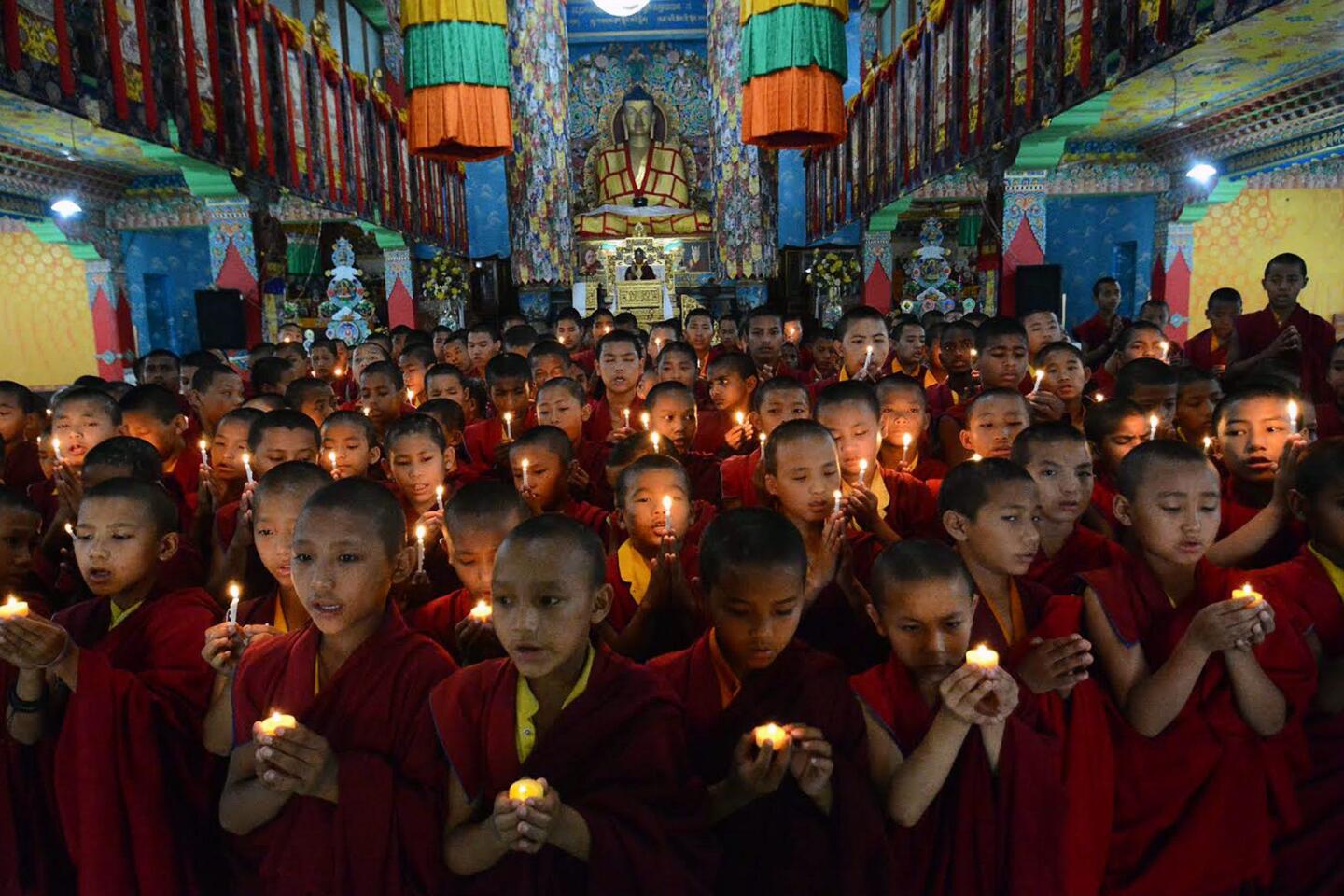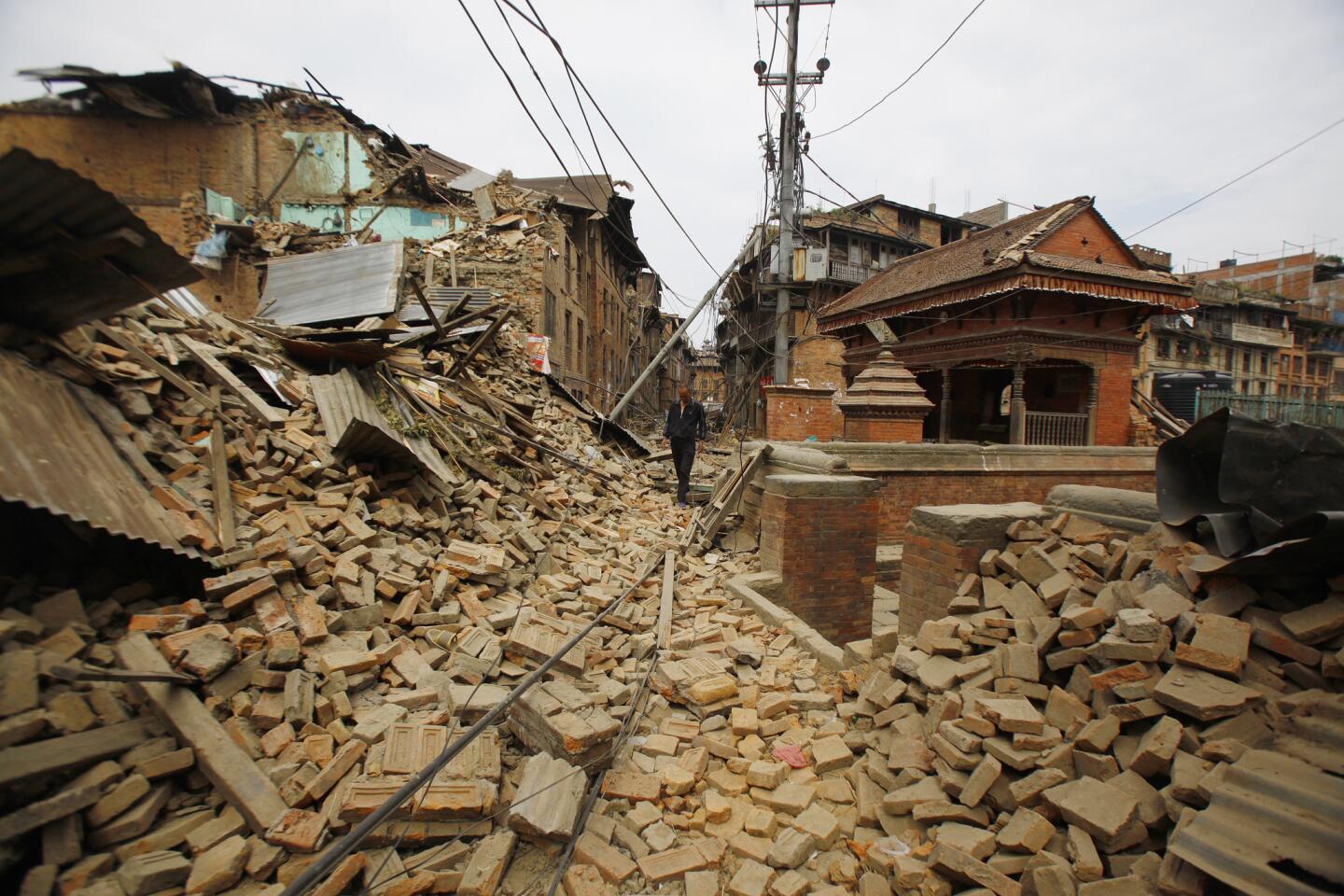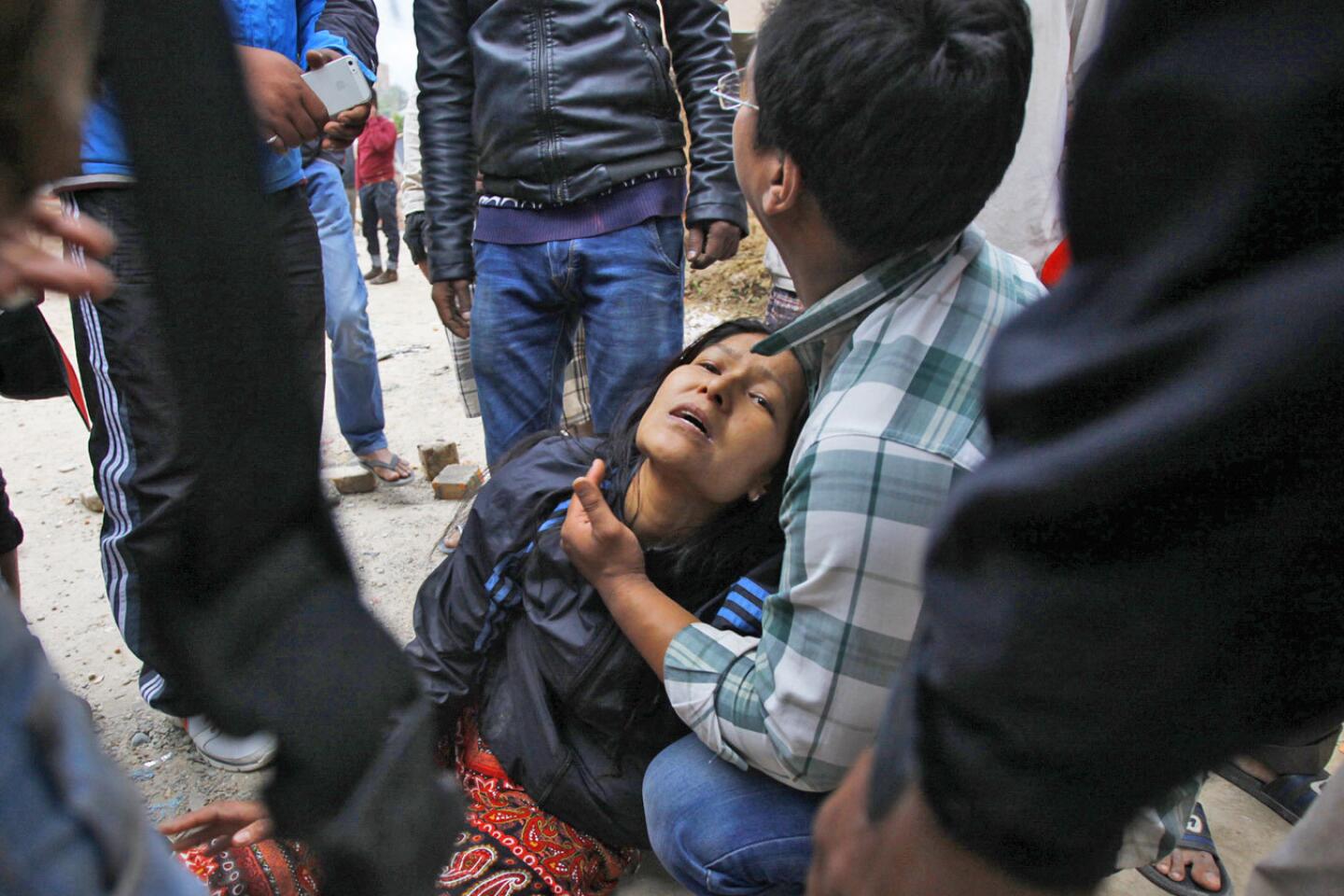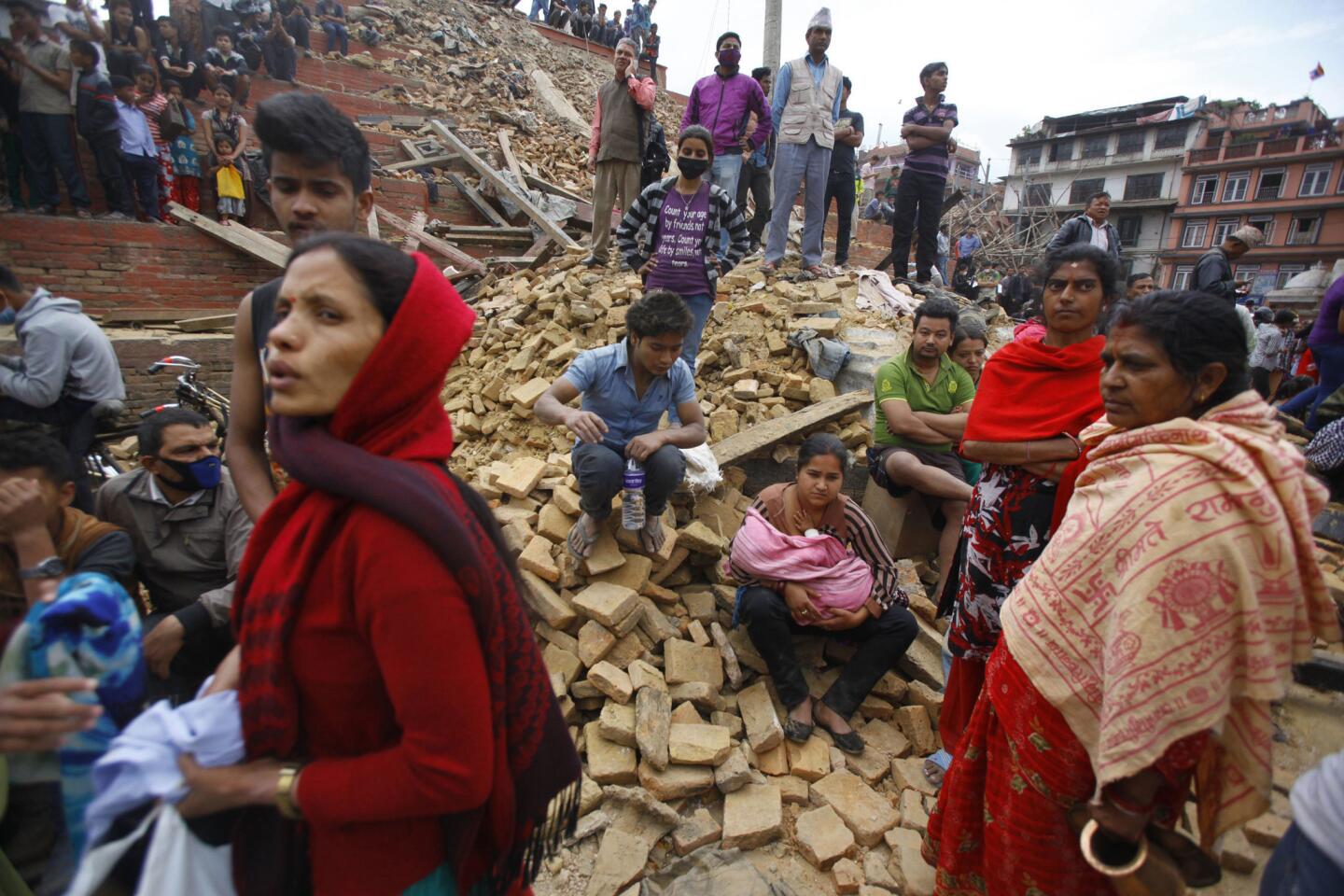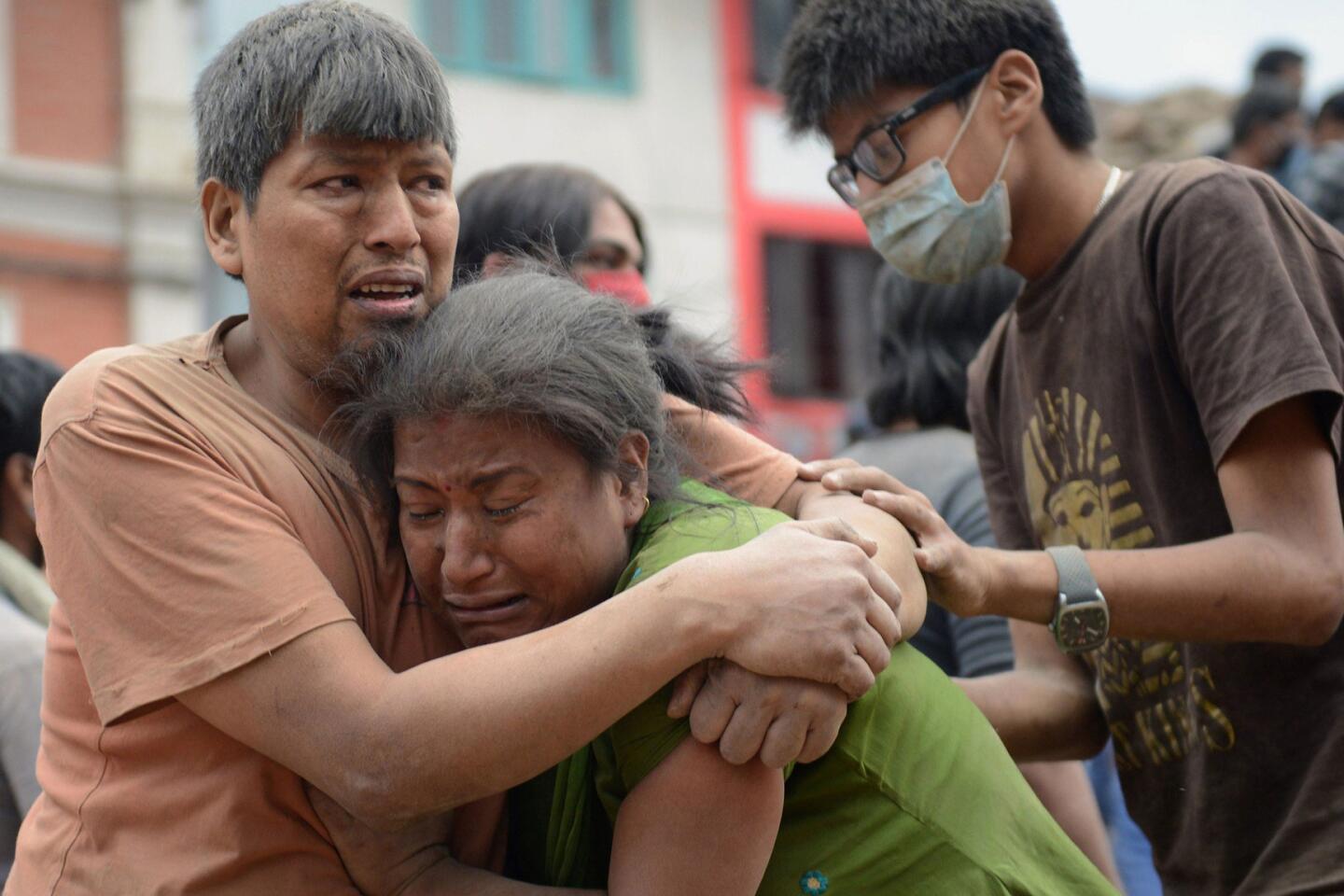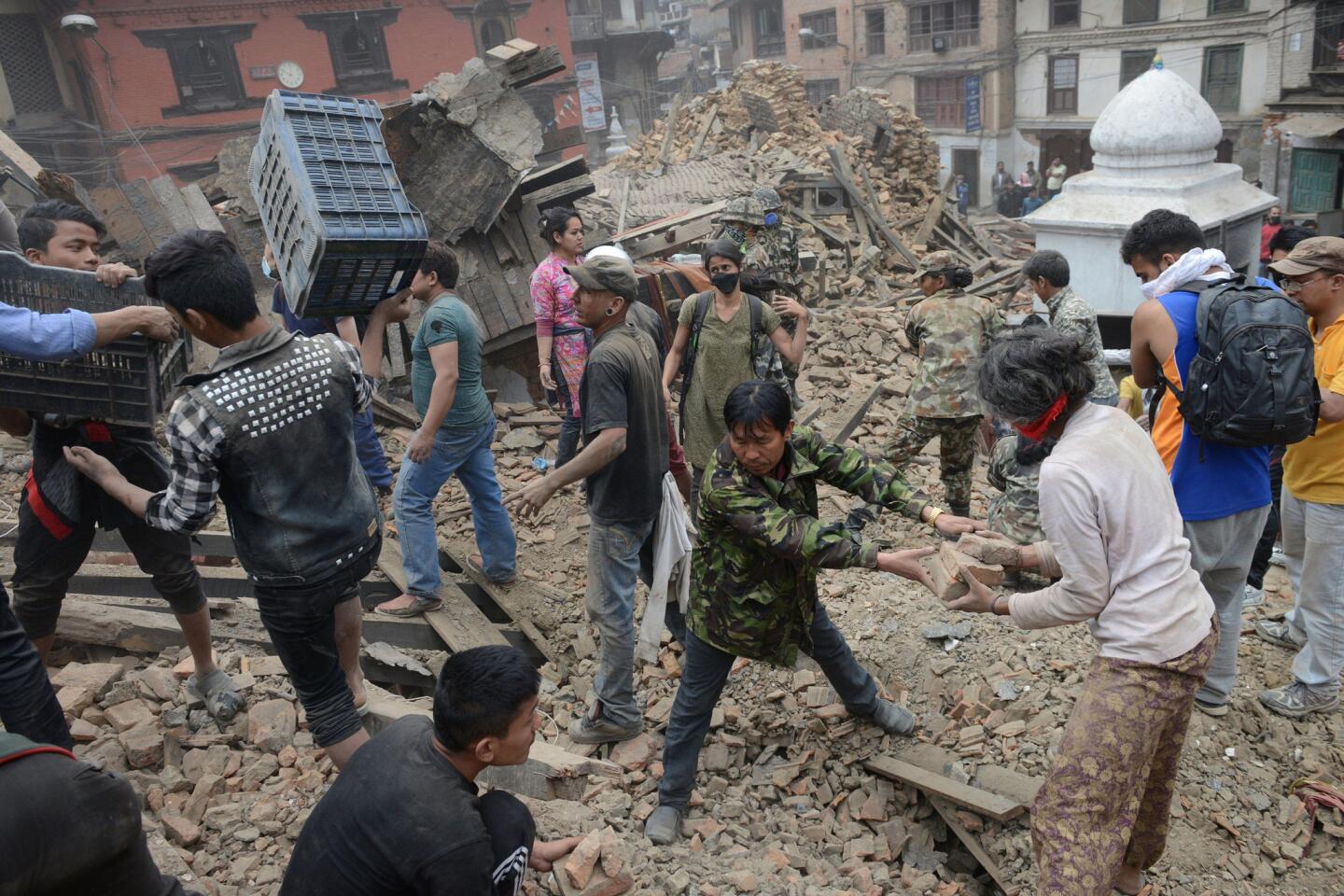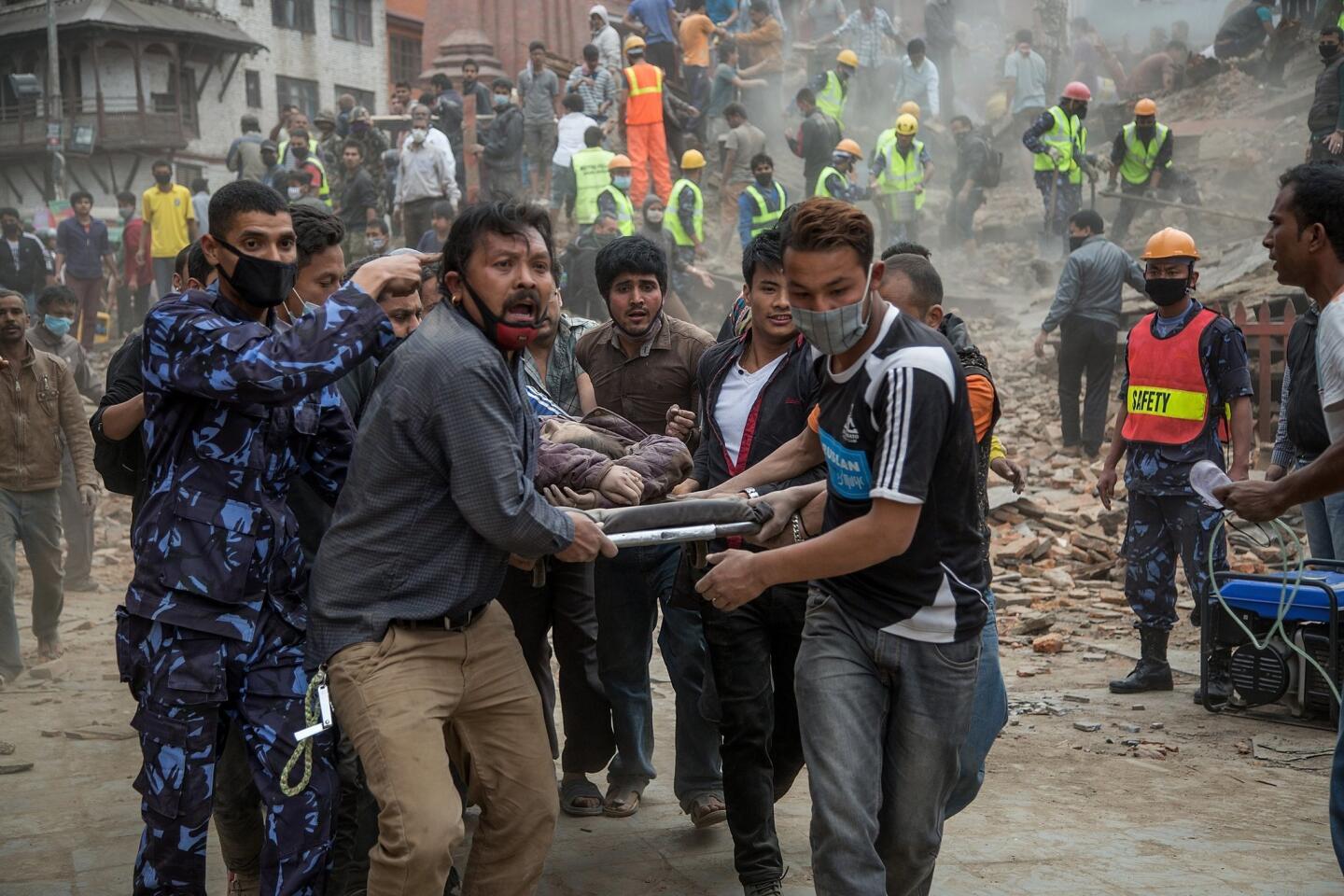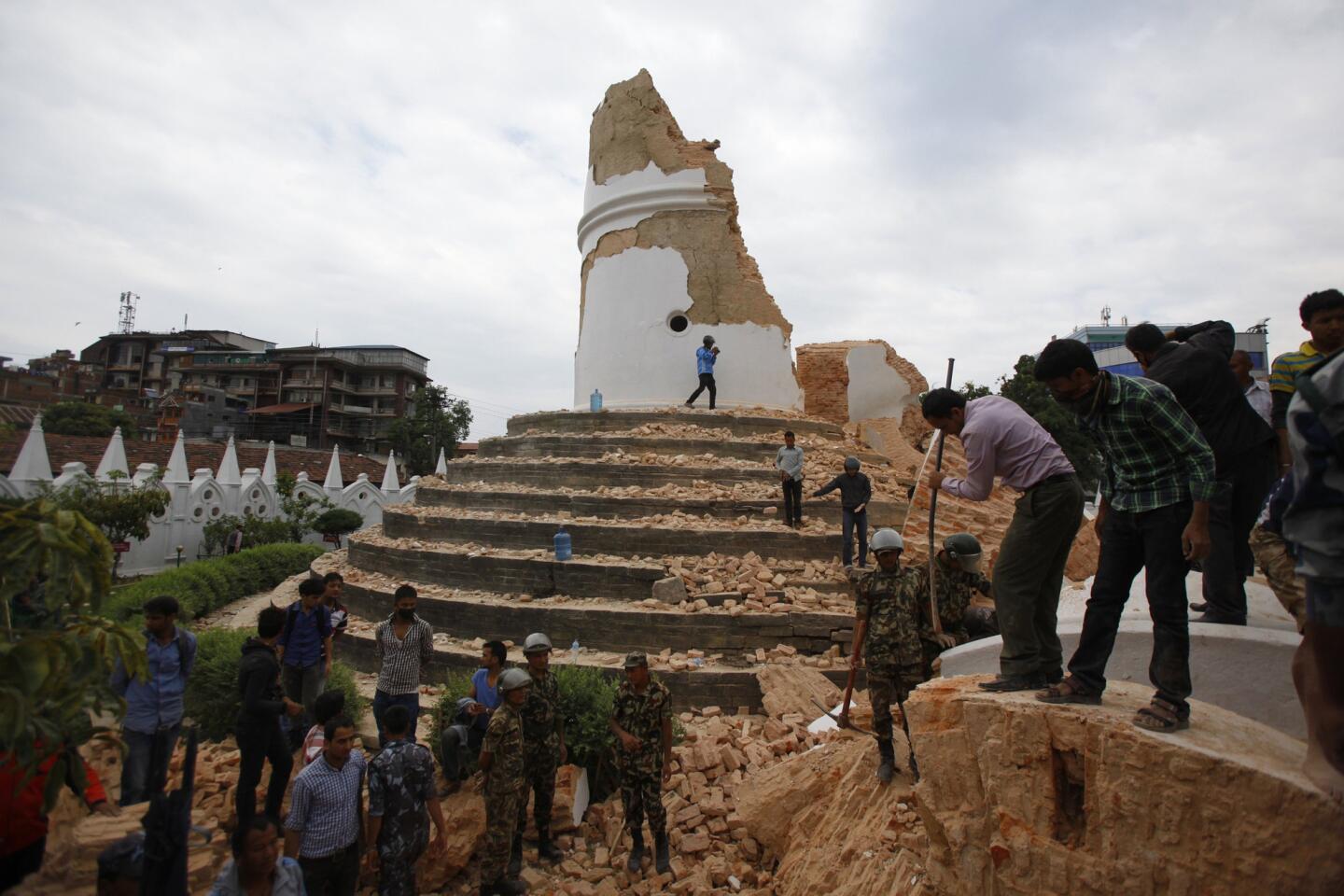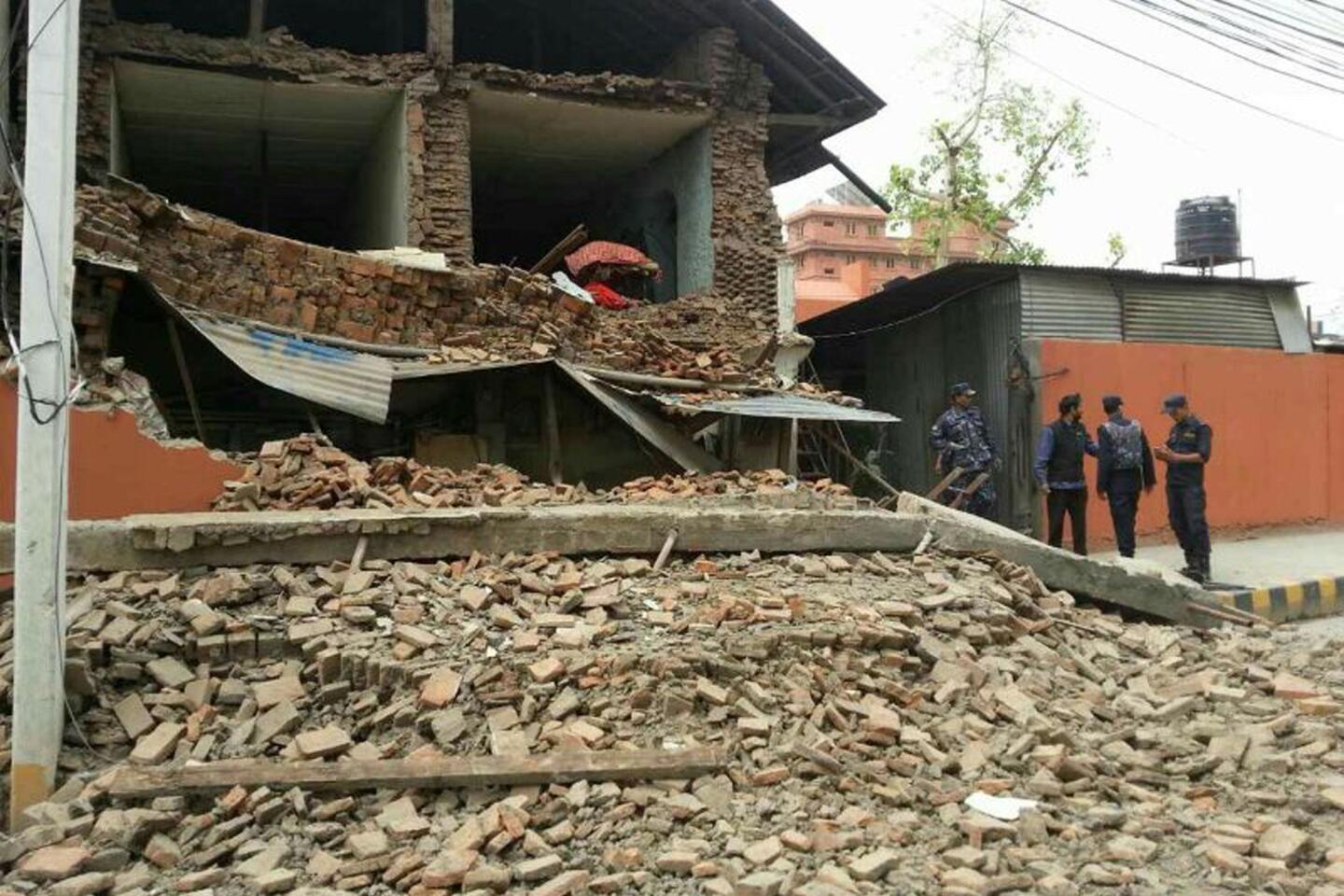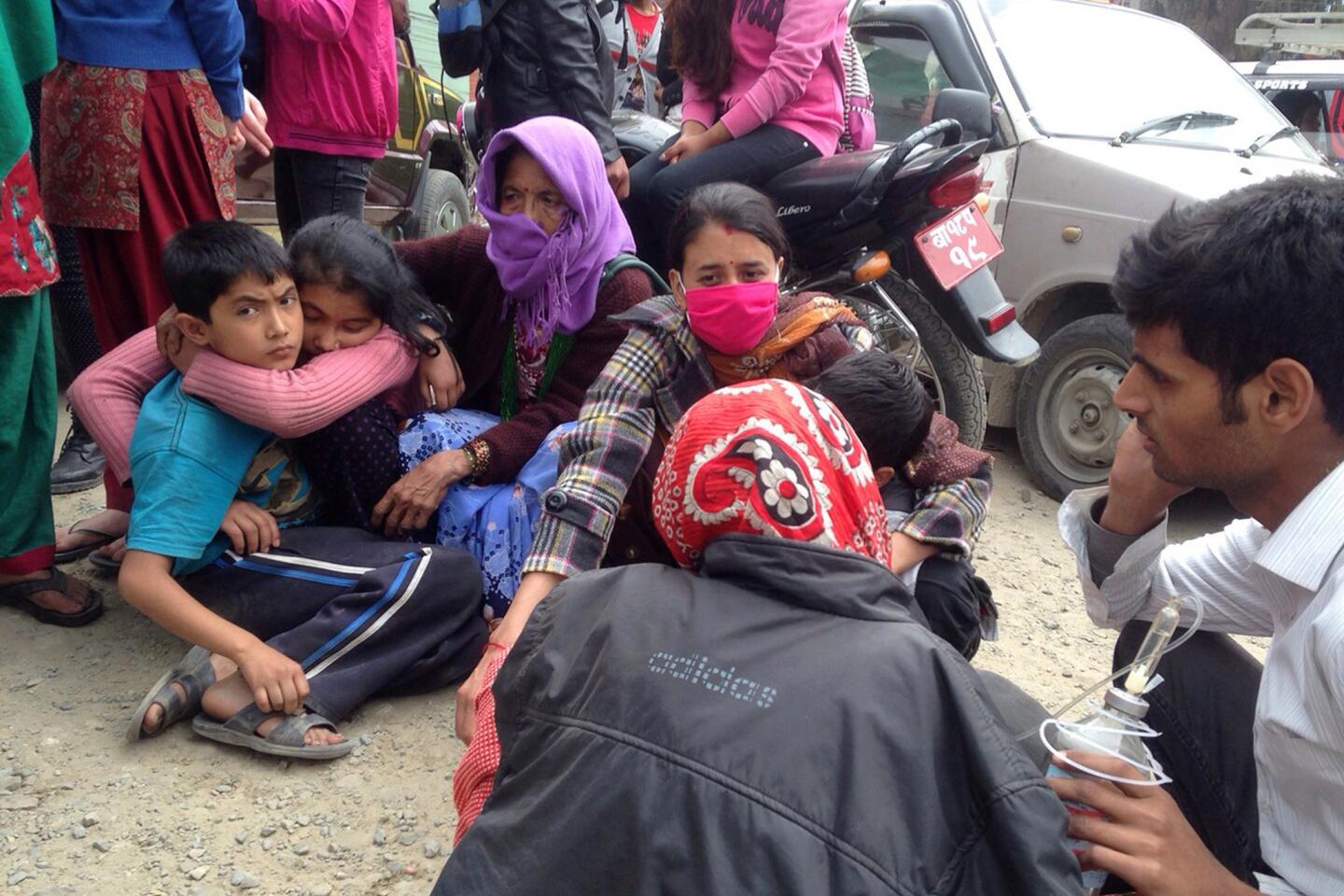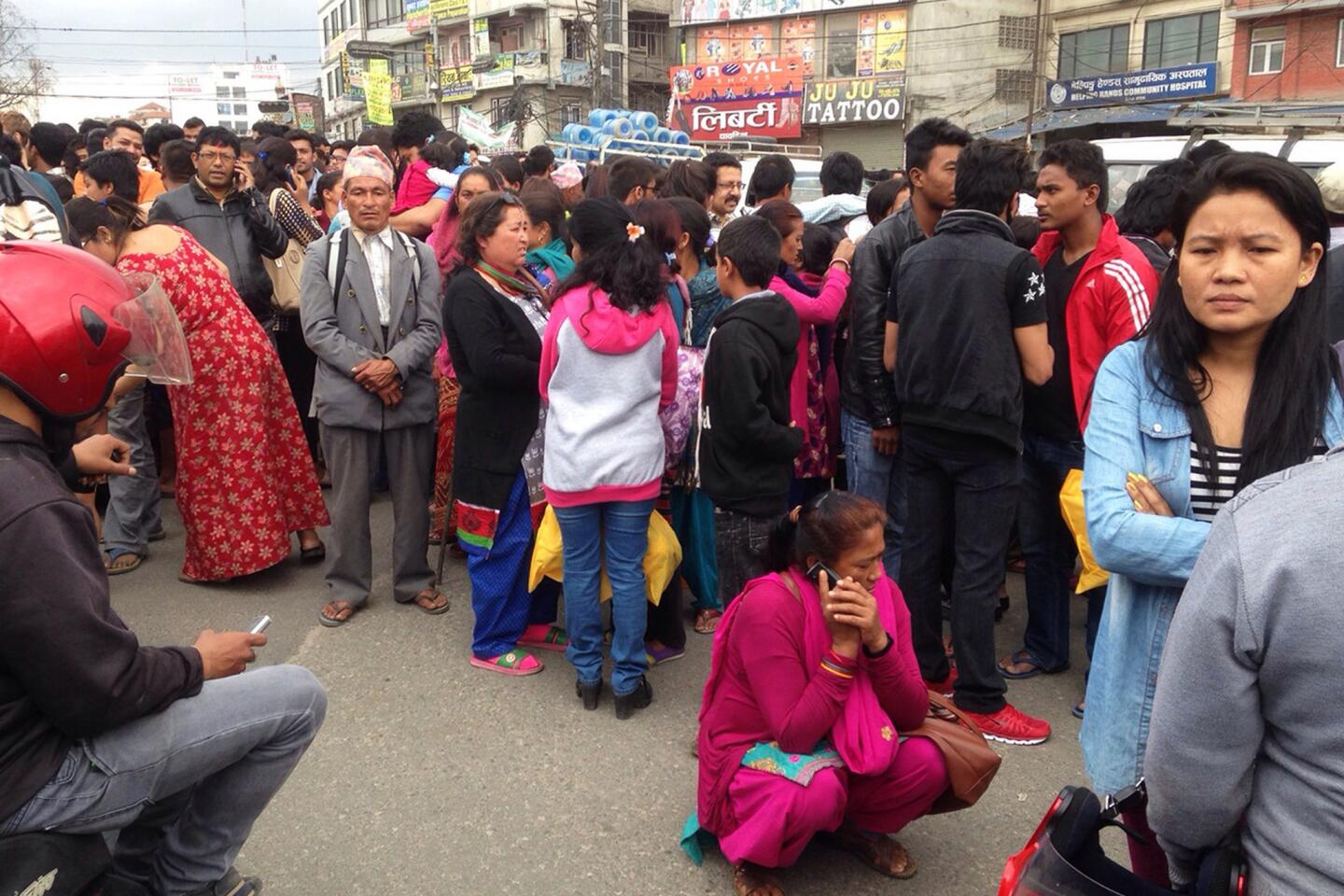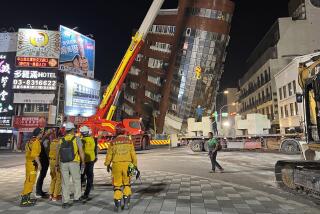Death toll from Nepal aftershock at 91; troops hunt for U.S. aircraft
Authorities in Nepal on Wednesday raised the death toll from a magnitude 7.3 aftershock to 91 people as troops combed a remote district northeast of Katmandu for a U.S. military helicopter that was missing with eight people aboard.
More than 2,400 people were injured in the Tuesday afternoon quake, the largest of a series of aftershocks centered in Nepal since a massive April 25 temblor, according to police officials.
An additional 17 people died in northern India, according to local news reports, 16 of them in the state of Bihar.
U.S. military officials said a UH-1Y Huey aircraft, which was participating in relief operations, went missing Tuesday while delivering aid and retrieving casualties from the Charikot area, near the quake’s epicenter. The aircraft was carrying six U.S. service members and two Nepalese soldiers, said Capt. Cassandra M. Gesecki, spokeswoman for the 3rd Marine Expeditionary Brigade.
The aircraft belonged to Marine Light Attack Helicopter Squadron 469 based at Camp Pendleton.
The Nepali army was told that the helicopter may have come down in a river, and had mobilized 400 soldiers to aid in the search, a Nepalese army official told Reuters news agency.
However, Gesecki said reports that the helicopter had been found were “just rumors.”
“There’s been no confirmed communication” with the aircraft, she said, adding that there was no indication it had crashed.
Tuesday’s earthquake was centered 47 miles northeast of Katmandu close to the Chinese border, according to the U.S. Geological Survey. It unleashed fresh landslides in parts of northern Nepal still recovering from the magnitude 7.8 April 25 tremor, which killed more than 8,150 people and flattened or damaged hundreds of thousands of buildings nationwide.
Many families fled their homes Tuesday night and slept in open fields in Katmandu and elsewhere. In the Tudikhel area of Katmandu, 11-year-old Bhim Magar awoke Wednesday to find that many of his older family members had gone to fetch belongings from their house, believing they would not return there for several days.
“We were rolling on the ground because it was shaking so violently,” the boy recalled.
Schools, which were due to reopen later this week, would be closed until later in the month, Nepalese officials announced.
“Looks like we won’t be going to school again for a long time,” Bhim said.
Before Tuesday’s quake, Prem Kumari, 24, had just returned to her home in the densely populated area around Katmandu’s New Road with her husband and 2-year-old daughter, after spending the previous two weeks taking refuge in a playground.
Following the aftershock, Kumari spent the night at Tudikhel under a tarpaulin sheet with dozens of other families. Her husband, a porter, had just returned to his job over the weekend and she was again afraid that he would lose his job.
“I am even more scared now. The bricks falling from my room almost struck us yesterday,” she said, holding her baby daughter. “How long will we have to camp out again?”
Aid workers in Sindhupalchowk district east of Katmandu, which was hit hardest by the earlier quake, said fresh landslides had severely restricted access to affected villages. One village where aid workers from the CARE international relief organization were distributing aid at the time of the quake did not have a single home left standing, said Lucy Beck, a communications officer with CARE.
“A lot of the roads that weren’t already ruined or affected by landslides now are,” Beck said. “Our team was able to drive up to the village before the aftershock, but afterward had to hike back three hours to an open part of the road.”
With the annual monsoon rains expected to begin in weeks, Beck said Nepalese in affected villages are in immediate need of proper shelter and hygiene kits.
“People are desperate for tarpaulins,” she said. “Hygiene and sanitation are a major need because the recent quake destroyed latrines and household supplies.”
In the north Indian state of Bihar, 16 people were reported killed. Aid workers in the area said that buildings were damaged in the state capital Patna, 200 miles south of Katmandu, and many families spent the night at a sweltering park after authorities declared a 48-hour state of alert due to fears of more aftershocks.
The Indian nonprofit Rashtra Seva Dal, which works in Bihar, said that 12 people died in the state’s Darbhanga district, which borders Nepal. Cracks that had appeared in houses from the April 25 quake have widened, and more now seem on the verge of collapsing, aid workers said.
A dozen students were reportedly hurt when their school building collapsed in Darbhanga, the Hindustan Times newspaper reported.
“This has added to the ongoing relief work from the last earthquake,” said Sachidanand Singh of Rashtra Seva Dal. Fortunately, he said, electricity, water and phone lines were functioning normally.
Rai is a special correspondent. Staff writer Bengali reported from Mumbai, India. Special correspondent Parth M.N. contributed to this report from Mumbai.
For more news from South Asia, follow @SBengali on Twitter
More to Read
Start your day right
Sign up for Essential California for news, features and recommendations from the L.A. Times and beyond in your inbox six days a week.
You may occasionally receive promotional content from the Los Angeles Times.
